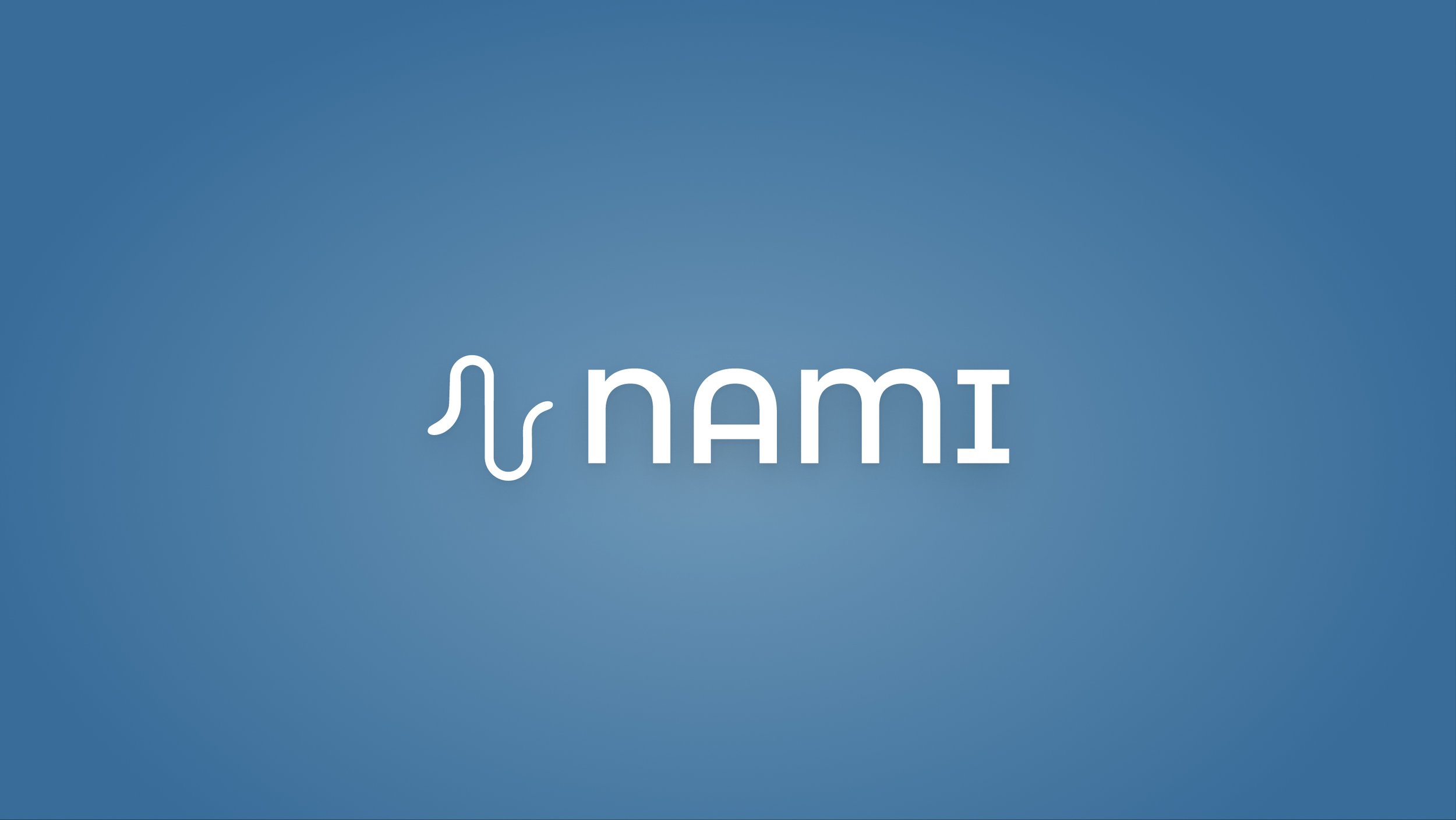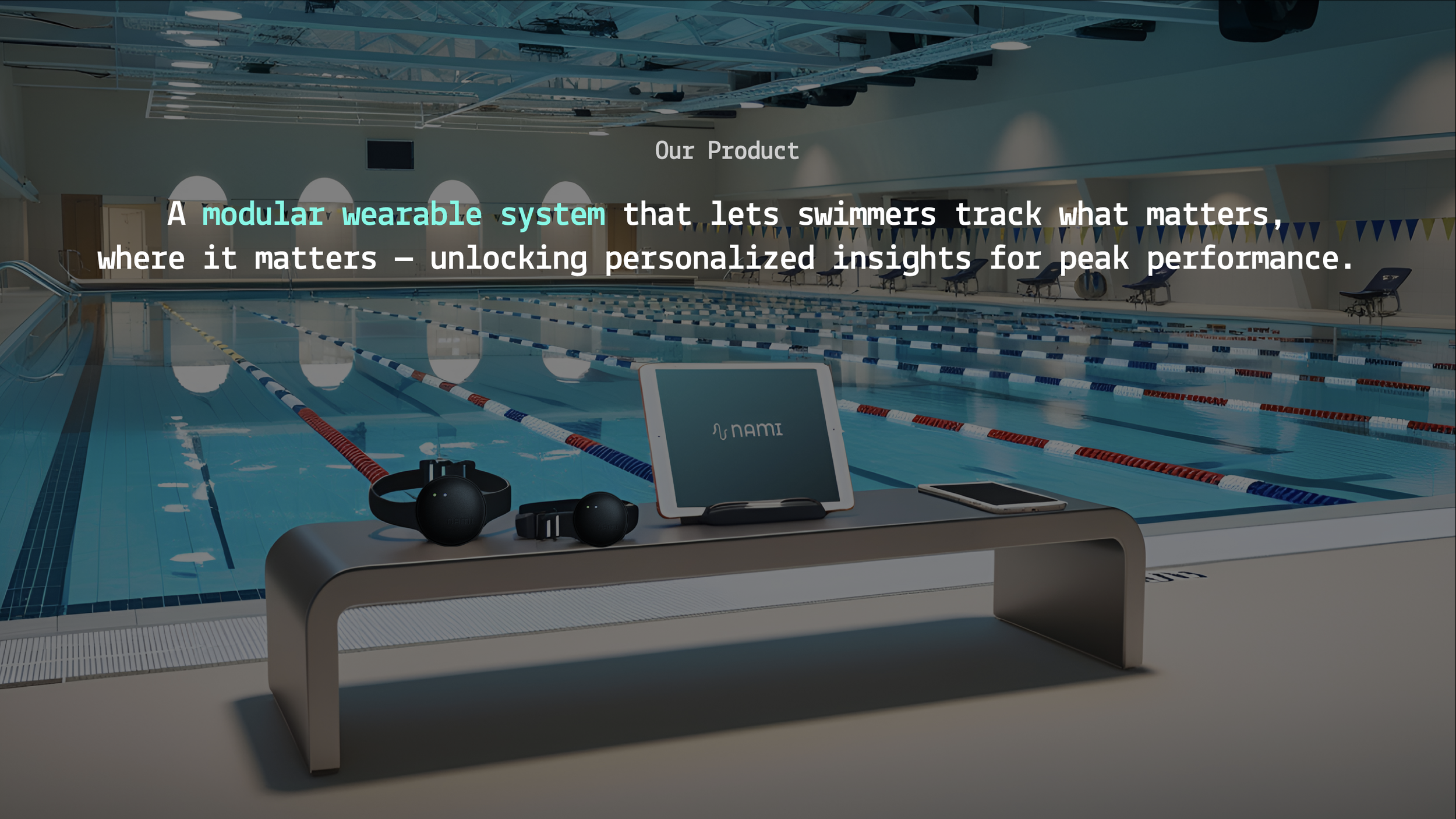Nami
Introduction
Nami reimagines competitive swimming with a data-driven, AI-powered feedback system that delivers actionable insights. Designed with female athletes as lead users, Nami fine-tunes strokes, optimizes techniques, and adapts to diverse biomechanics and training demands. As swimmers push boundaries and chase precision down to the millisecond, Nami serves as a trusted co-pilot, empowering athletes to achieve their dreams in the water and fostering an inclusive, equitable swimming ecosystem.
Problem
Competitive swimming is a sport where even milliseconds matter. Athletes like Darlene Fung, a Harvard graduate and sprinter, often train over 20 hours a week yet face performance plateaus. Coaches, constrained by resource limitations such as a 10:1 athlete-to-coach ratio, primarily rely on observational feedback, limiting actionable insights for improvement.
Globally, over five million competitive swimmers and 27,000 collegiate athletes highlight a significant market for innovation. Yet, existing technologies fall short, focusing on basic metrics like lap counts and heart rates without addressing stroke improvement. Nami sought to bridge this gap by developing a data-driven feedback system that empowers athletes and coaches to optimize performance collaboratively.

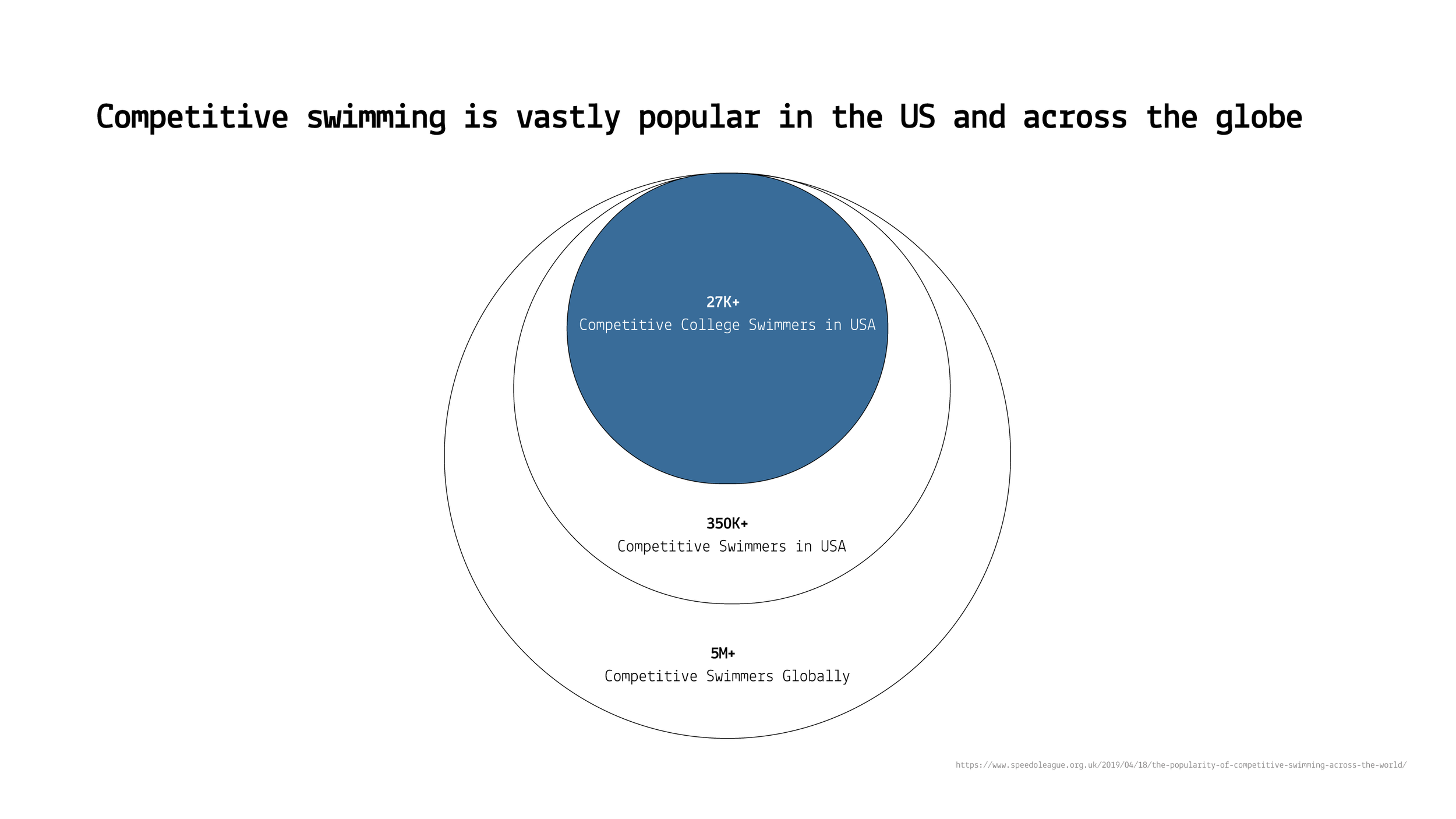
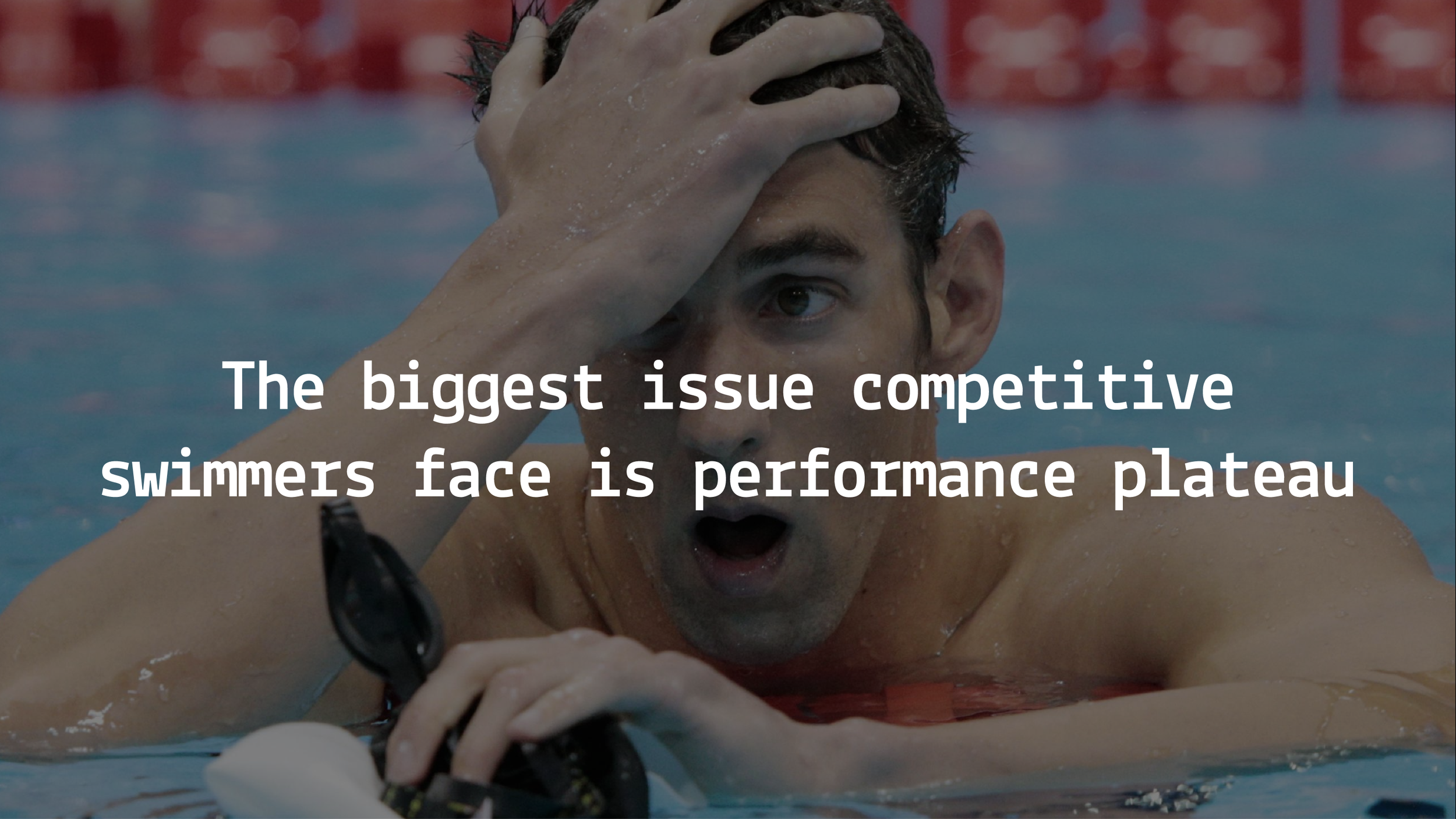
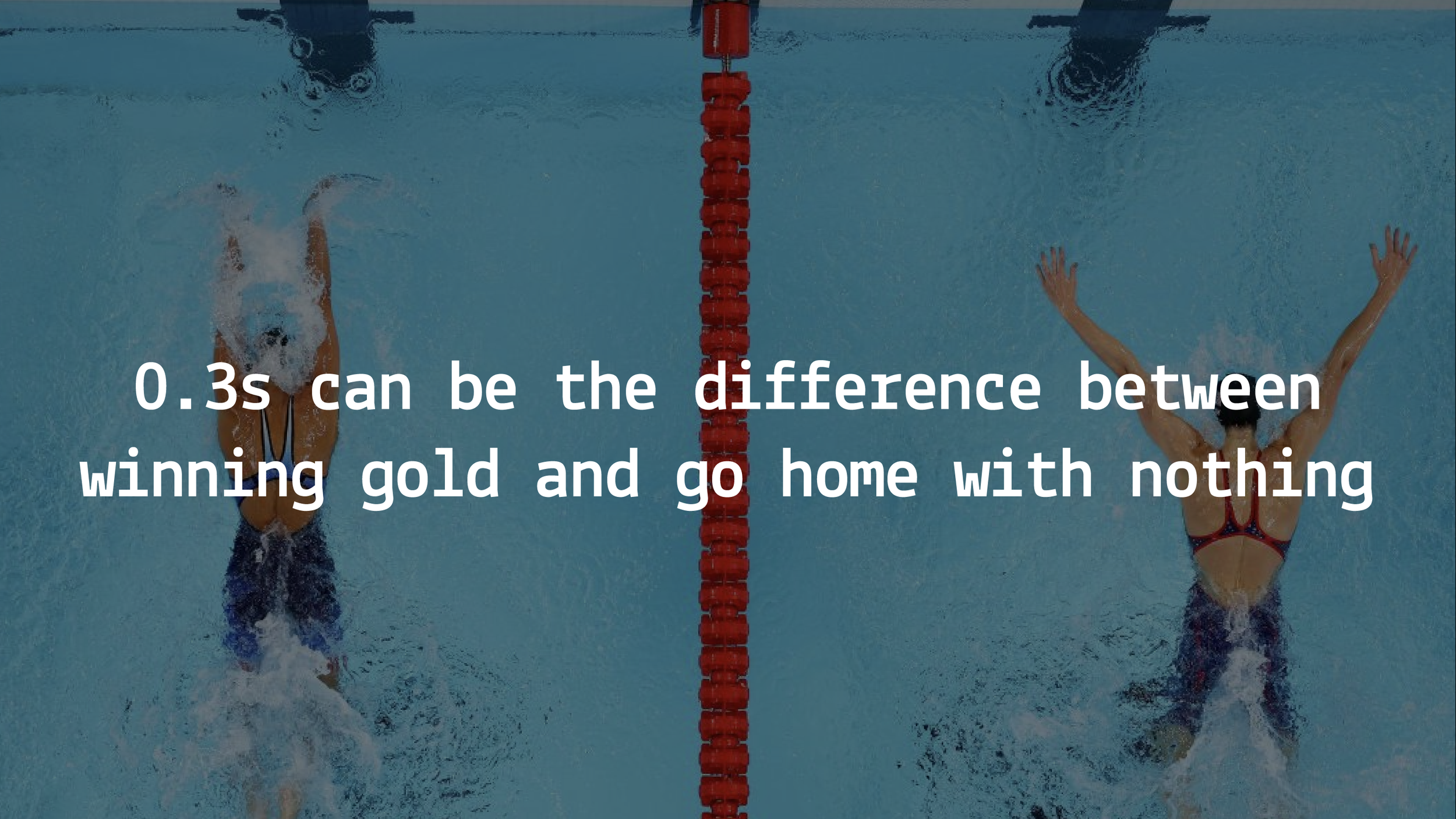
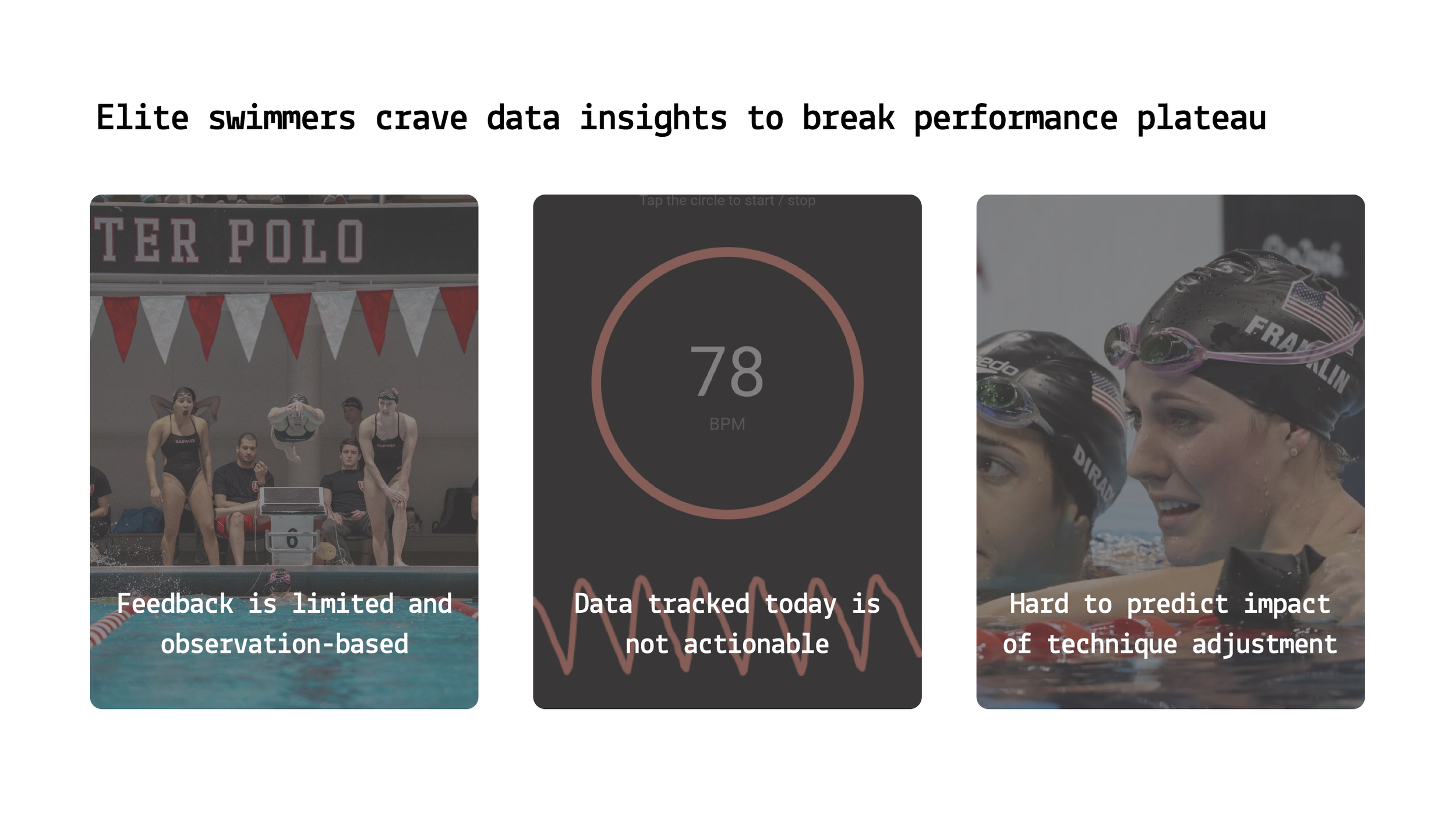
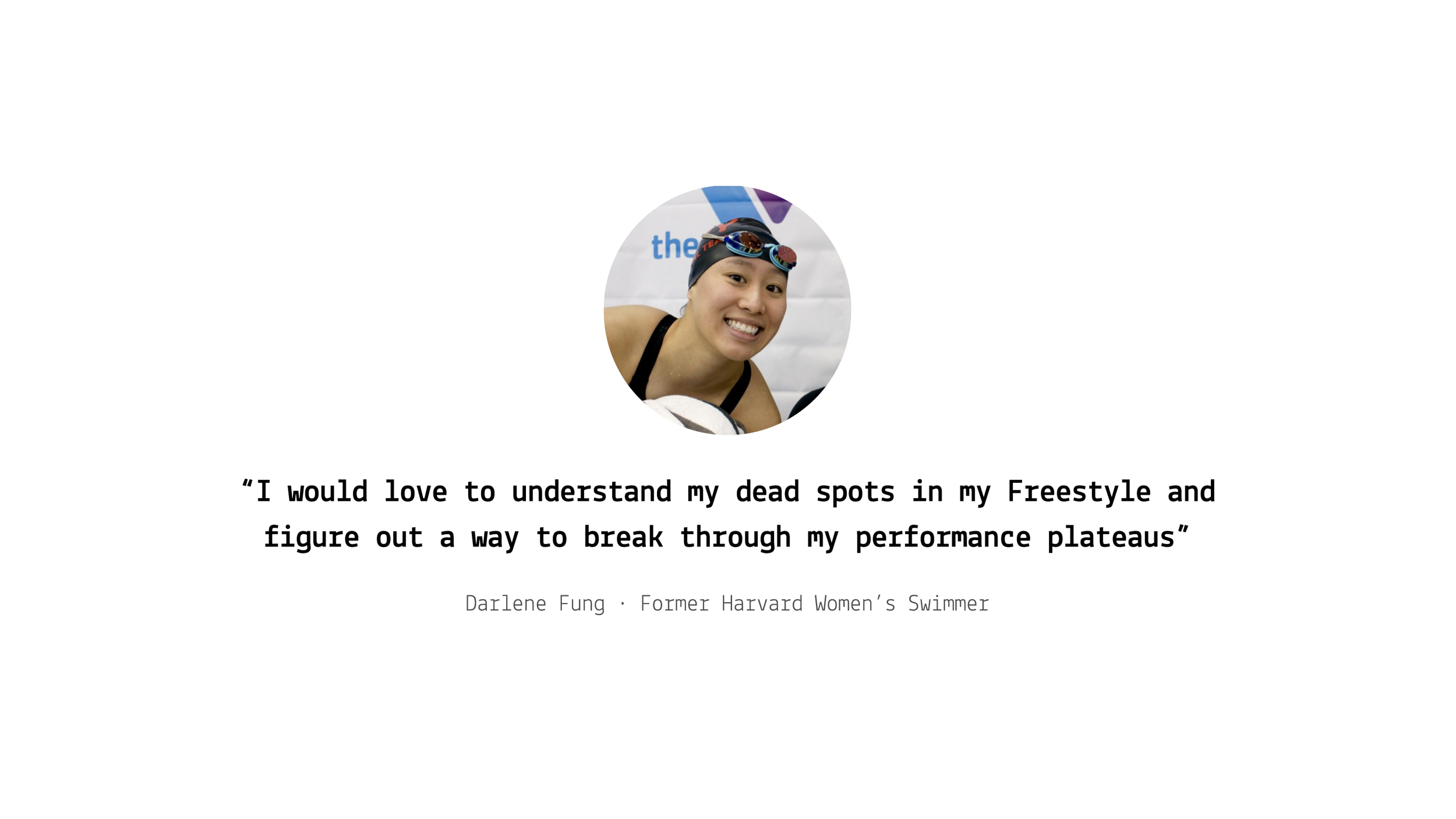
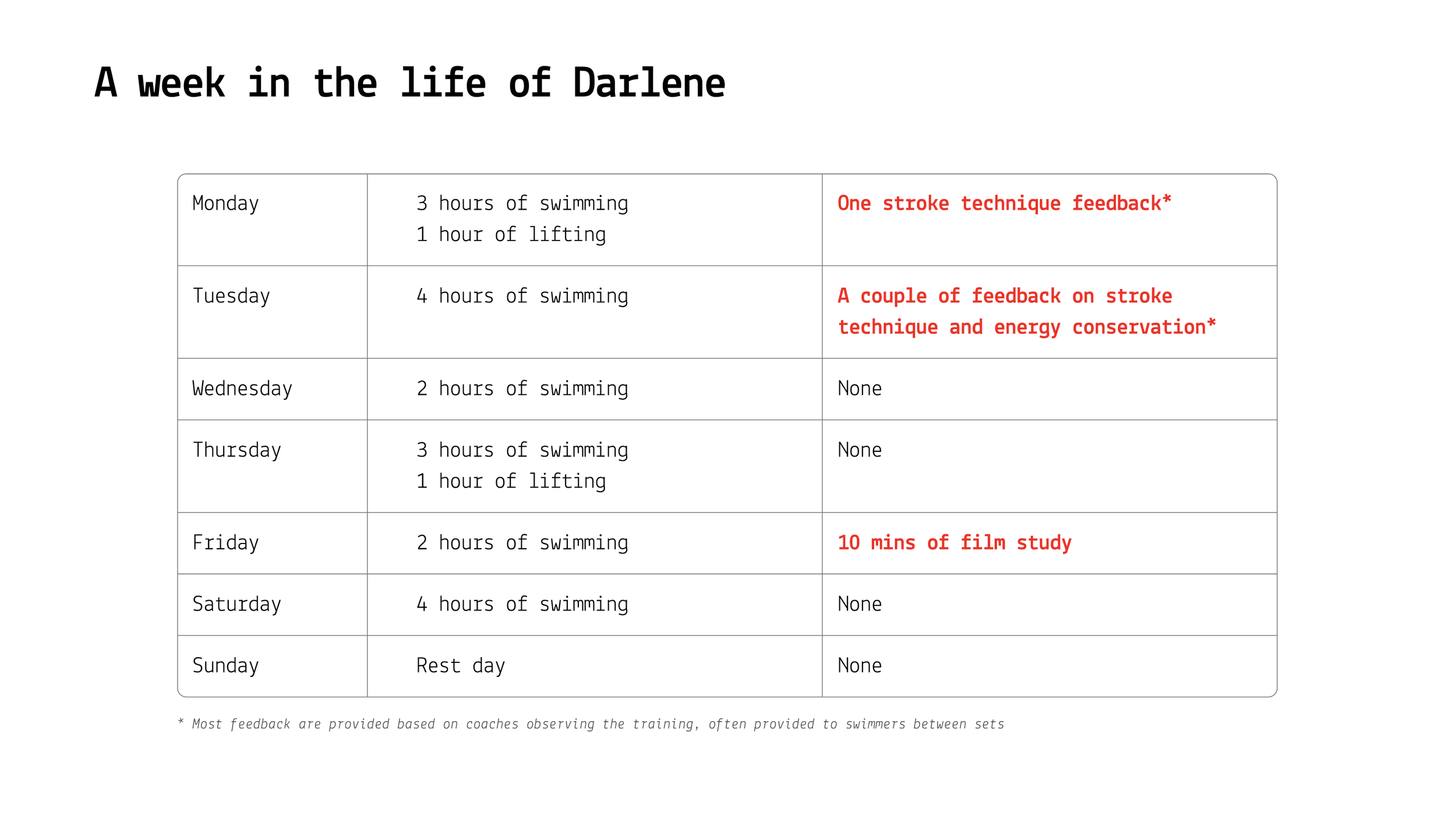
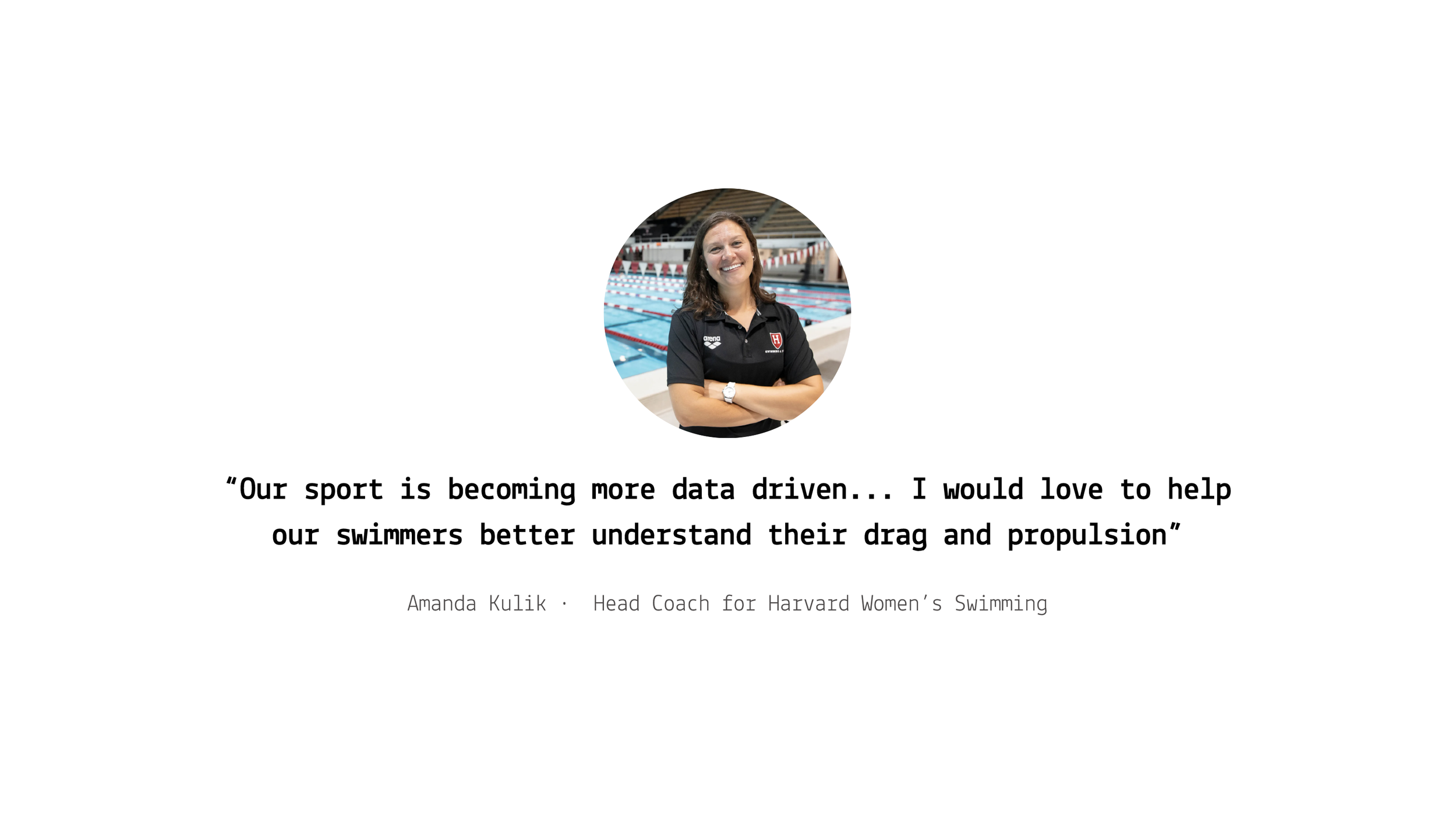
Solution
The Nami system comprises two key components
Nami Wearable - A lightweight, waterproof device equipped with IMU sensors to track metrics, including acceleration and gyroscopic motion. Its modular design enables placement on different body parts (e.g., ankle, goggles, hand, waist) for targeted training goals.
Nami App - This app acts as a data analysis hub, visualizing real-time metrics and providing personalized recommendations. Features include motion tracking, performance benchmarking, and AI-driven stroke analysis to refine techniques with precision.
This integrated system transforms data into actionable insights, helping swimmers identify inefficiencies and improve their technique with guidance grounded in quantitative evidence.

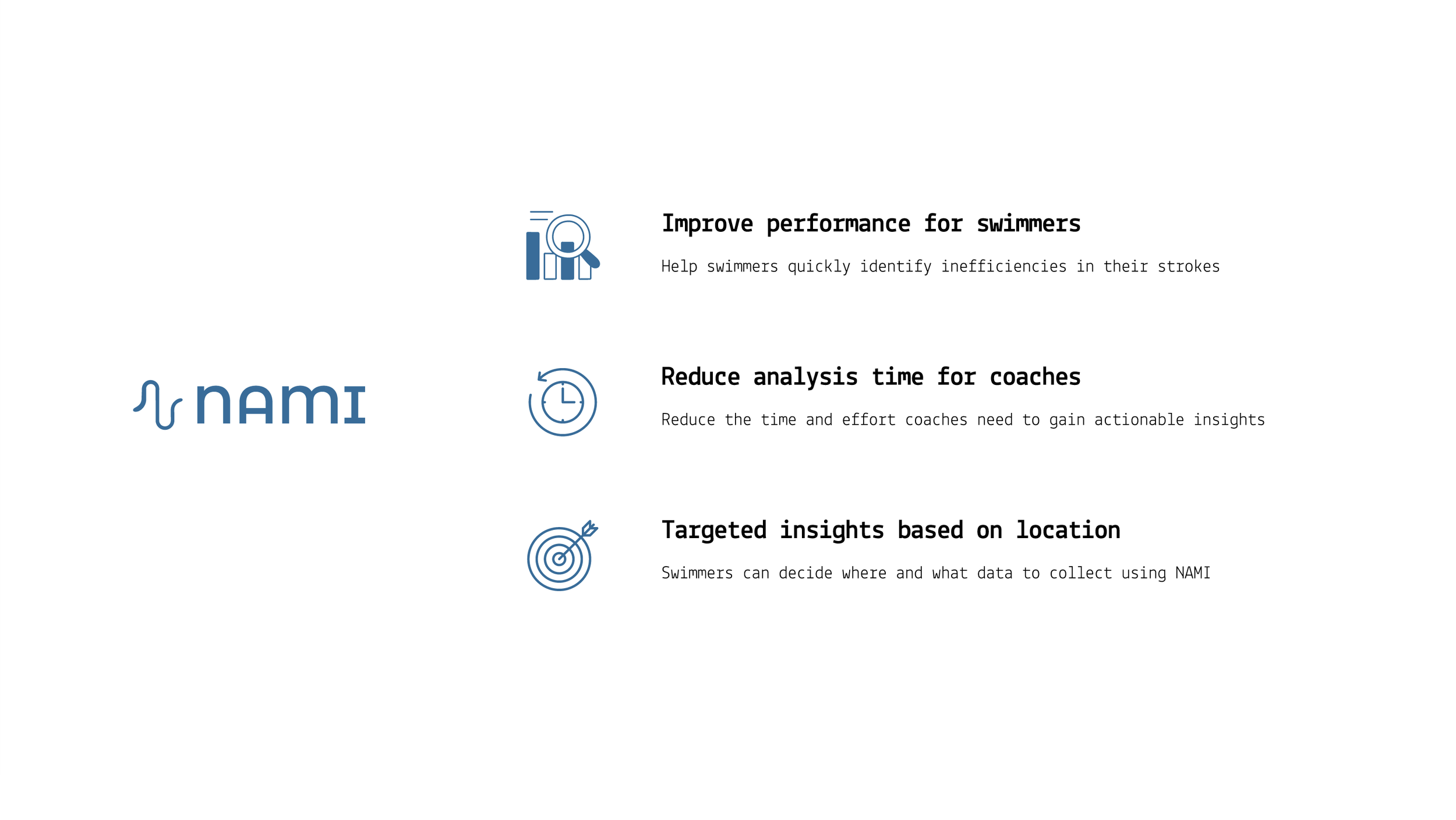
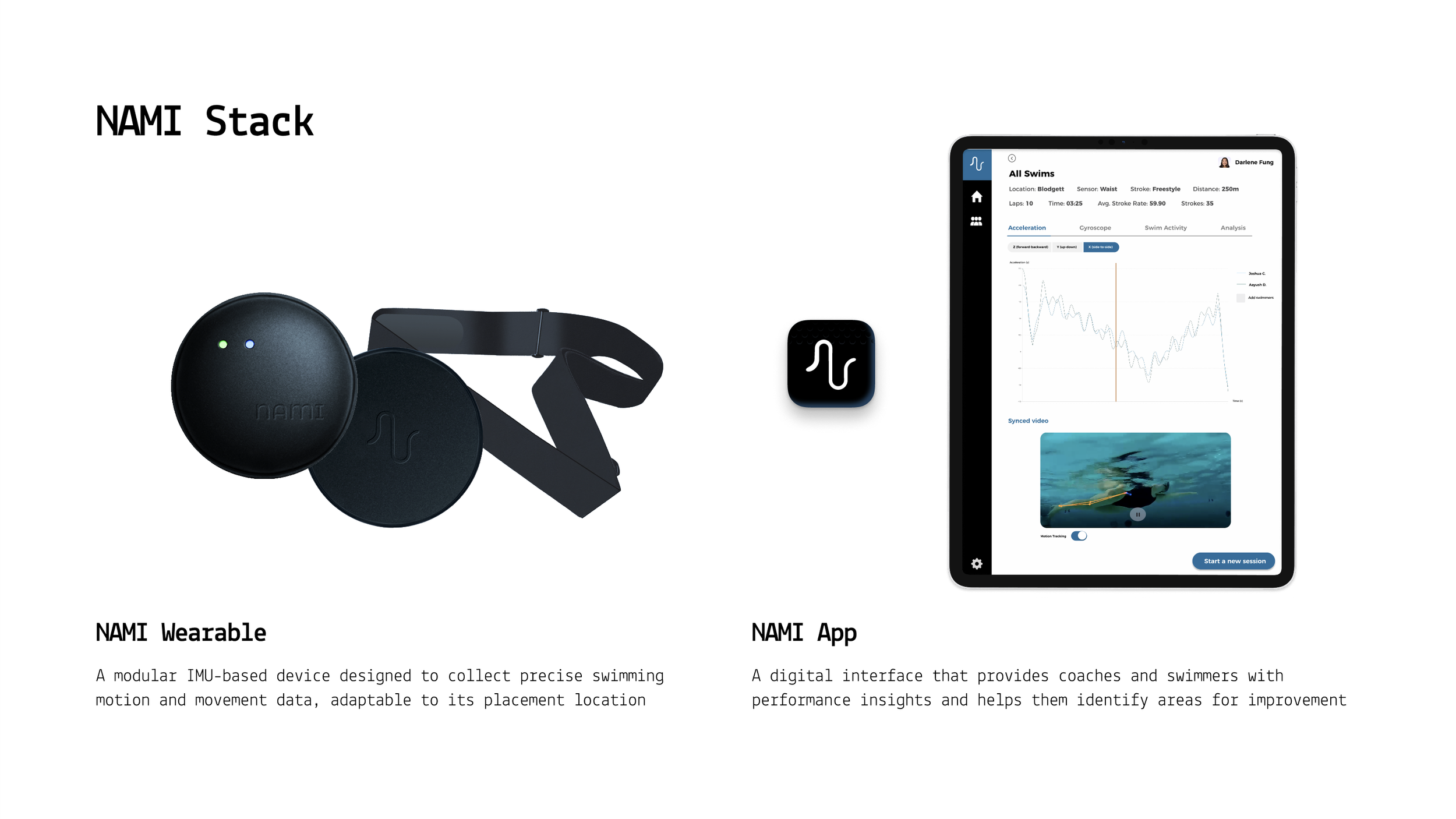
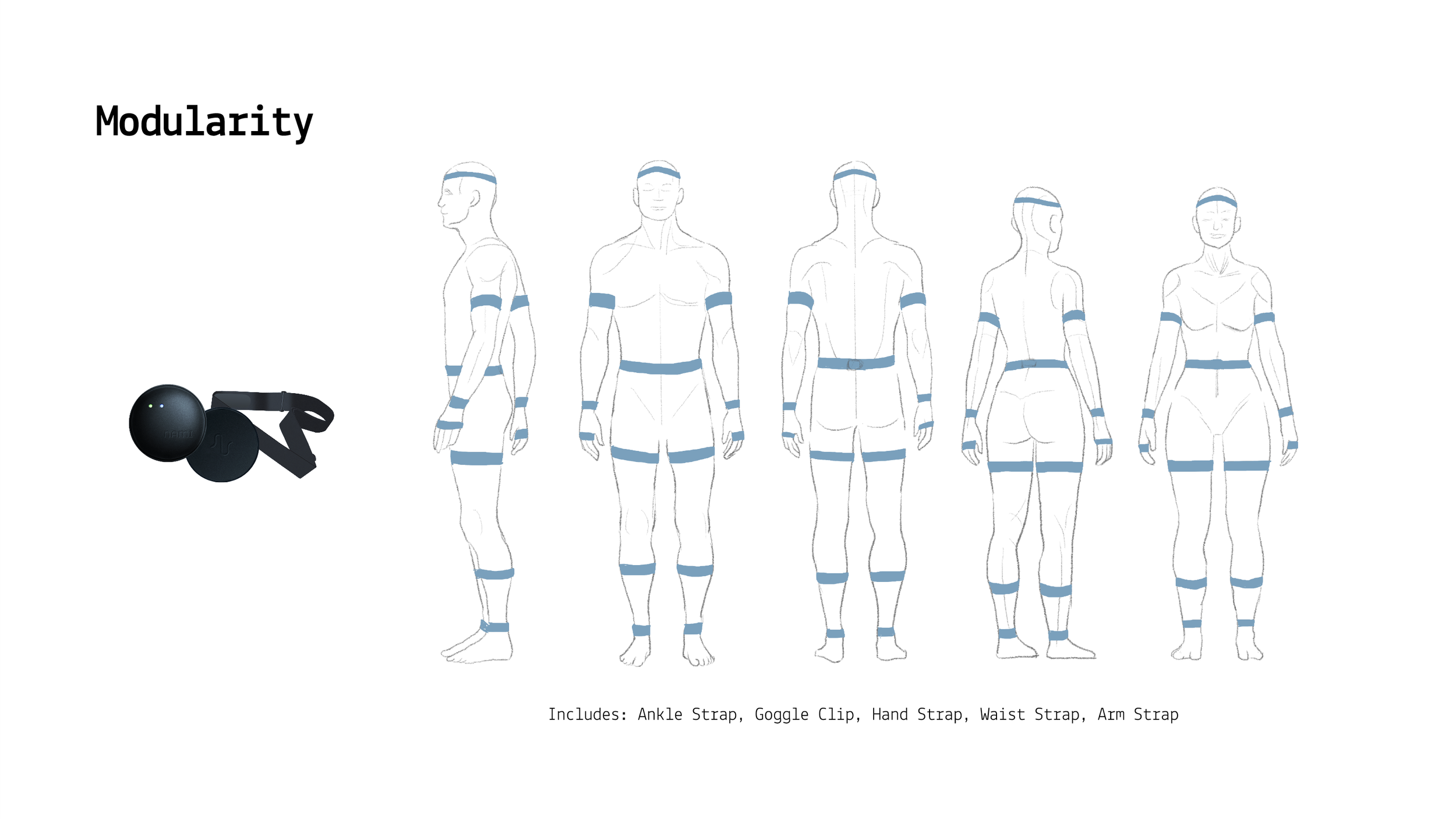
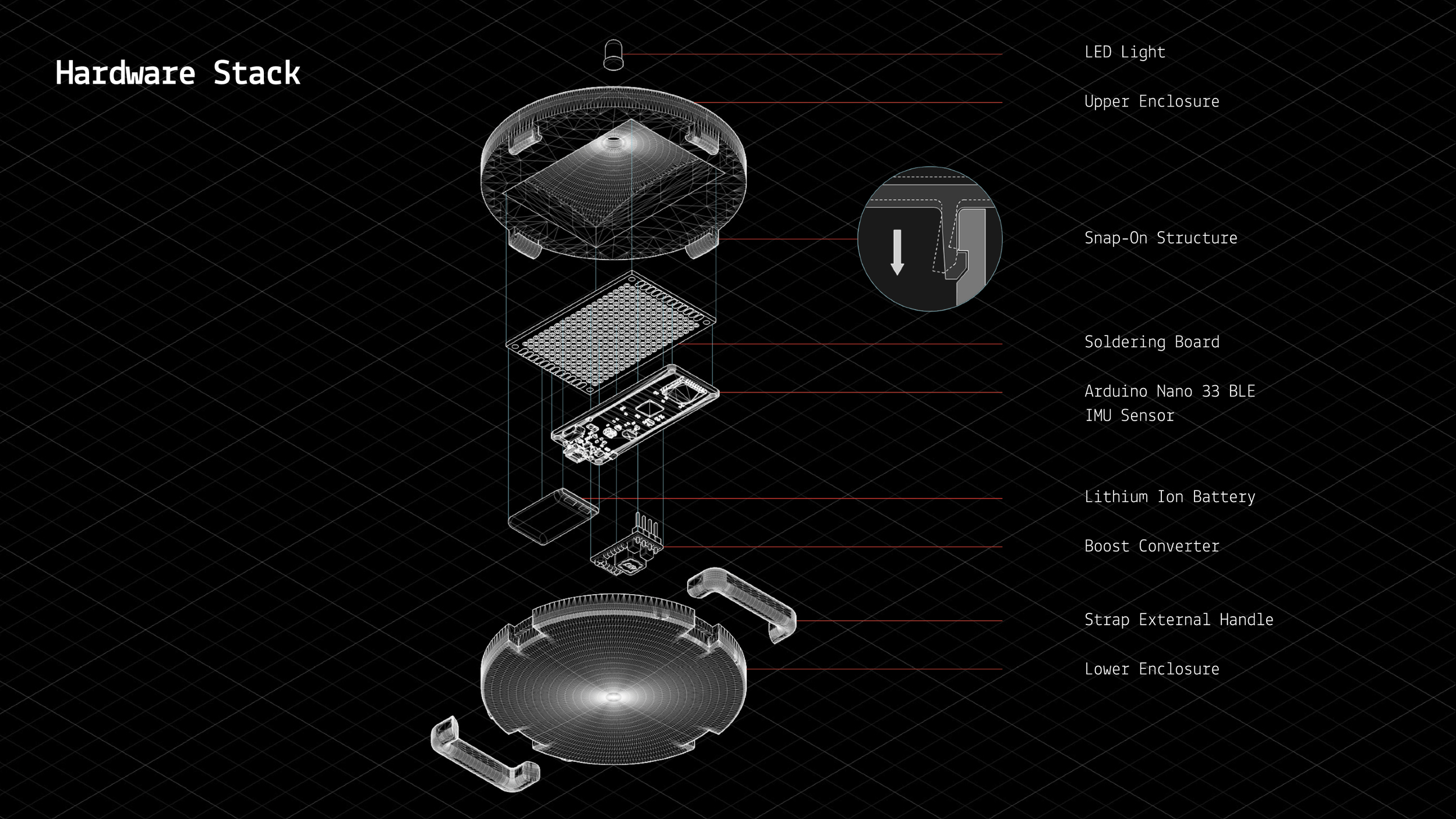
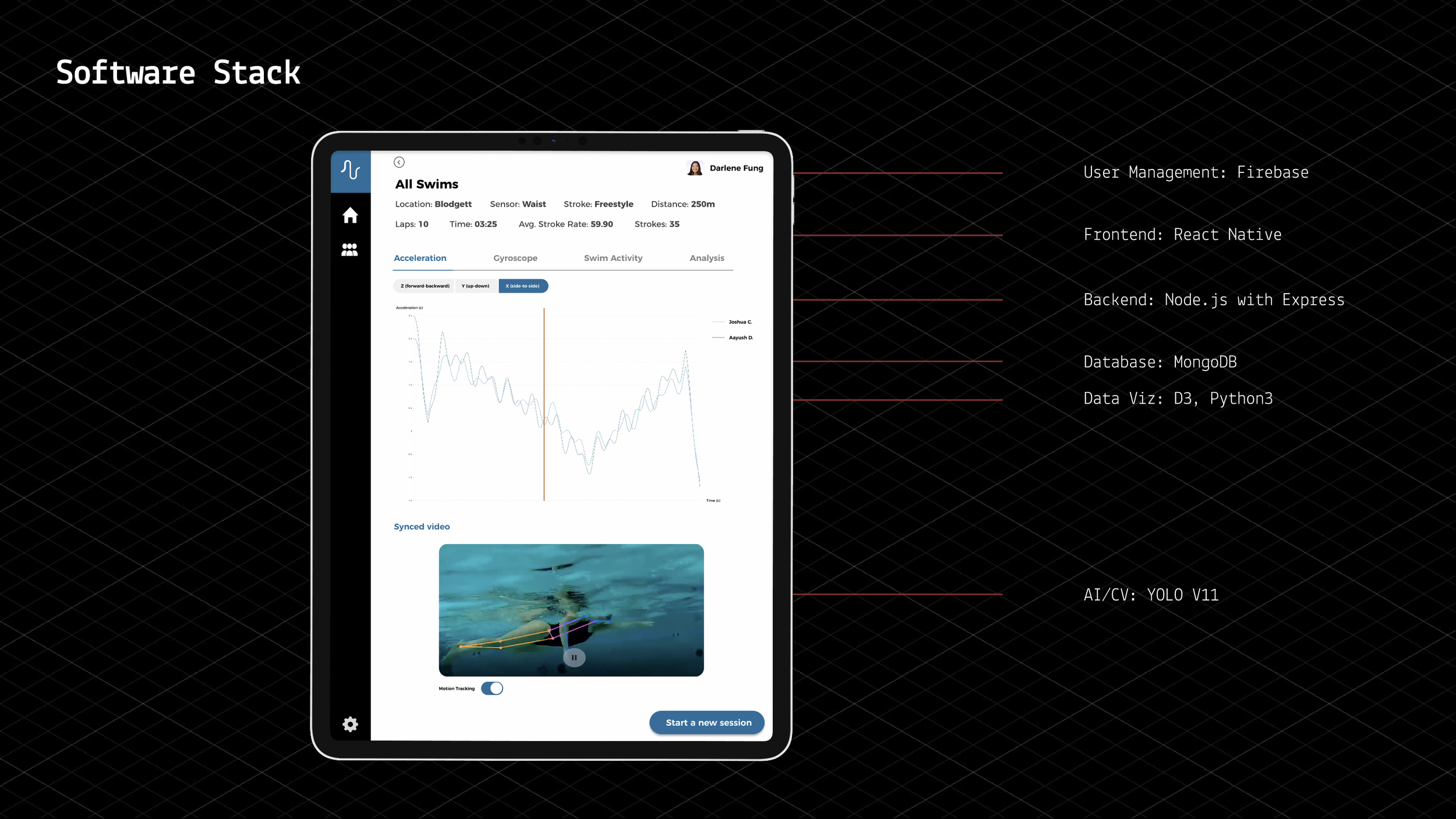
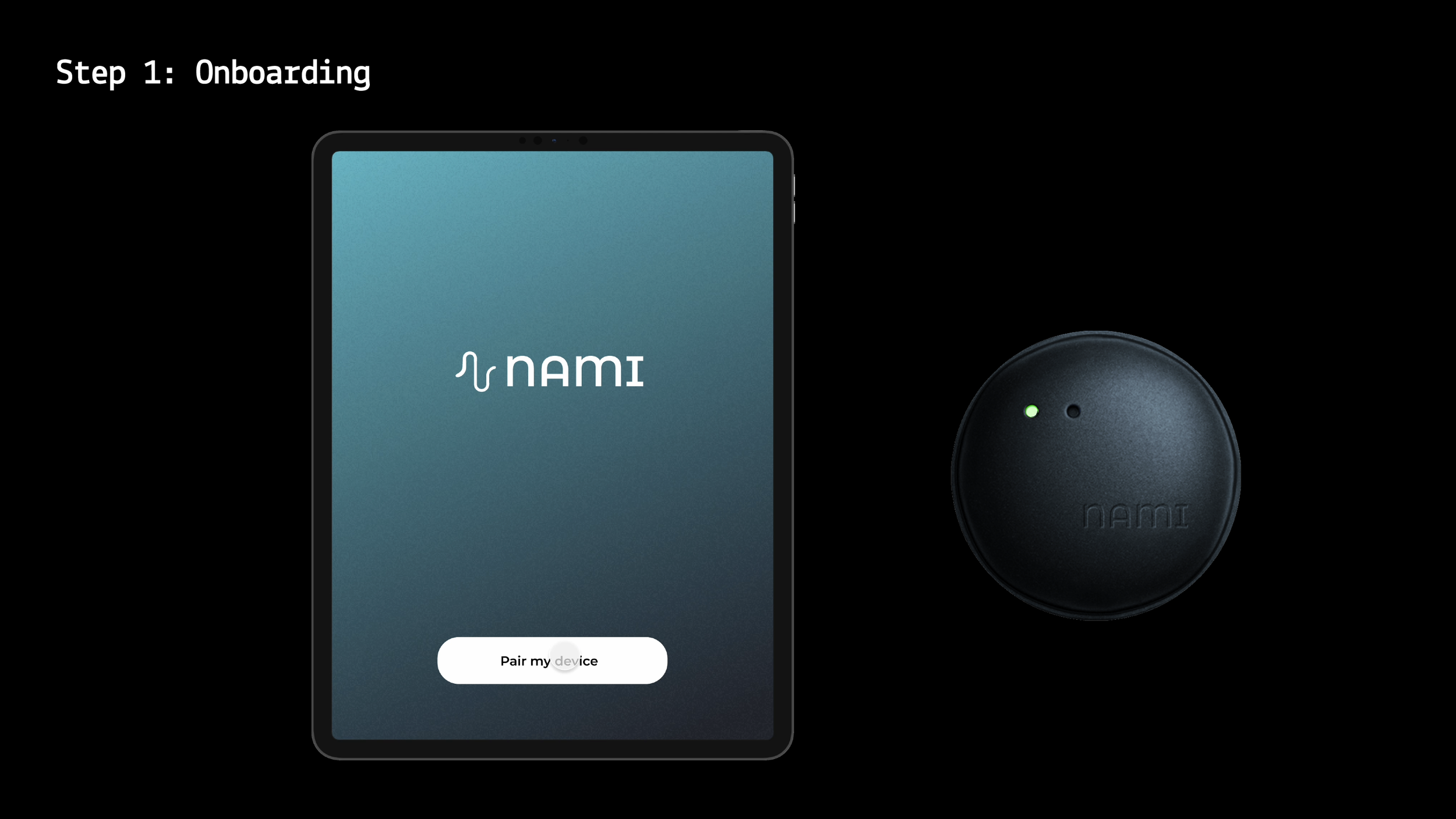

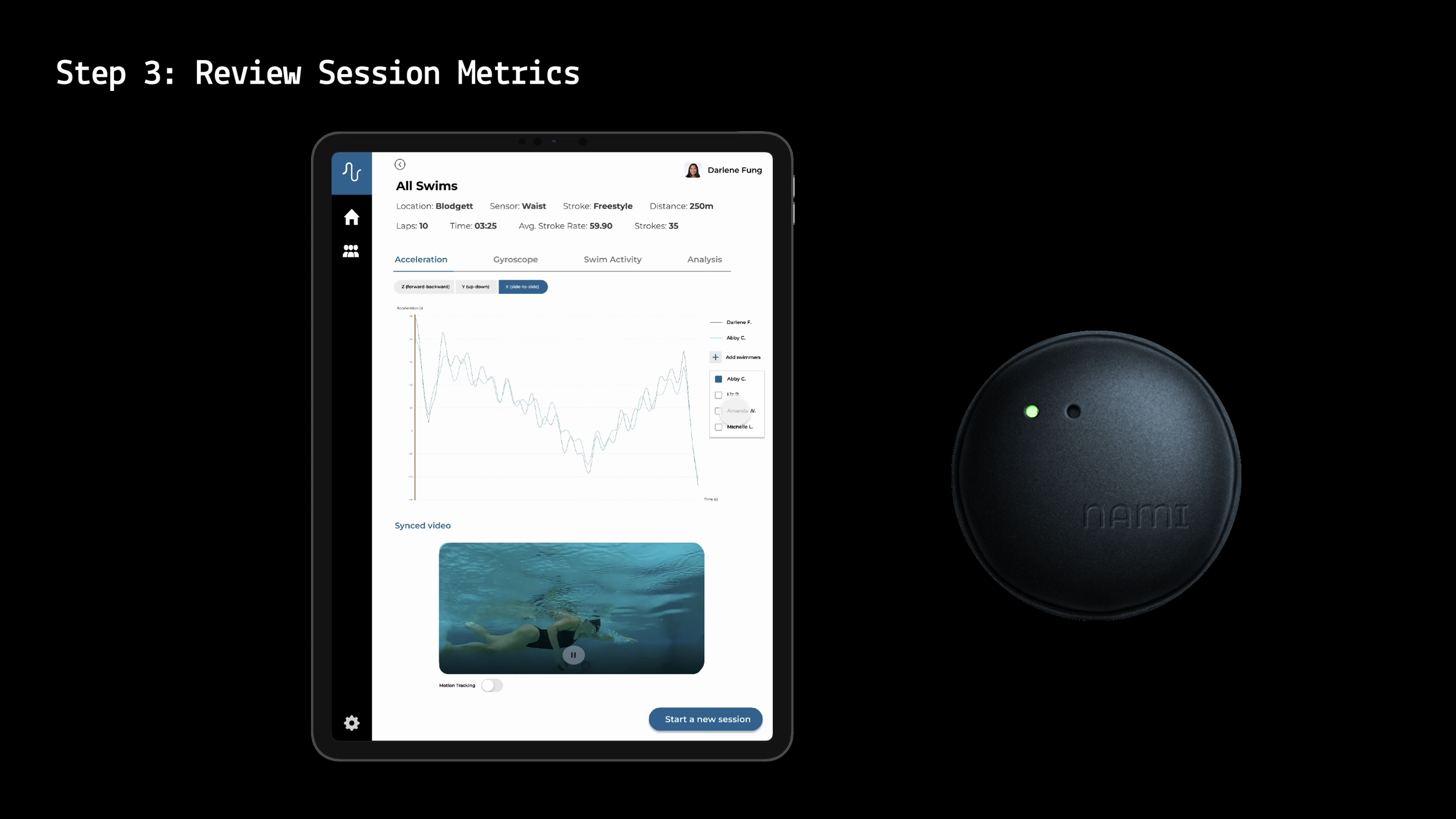
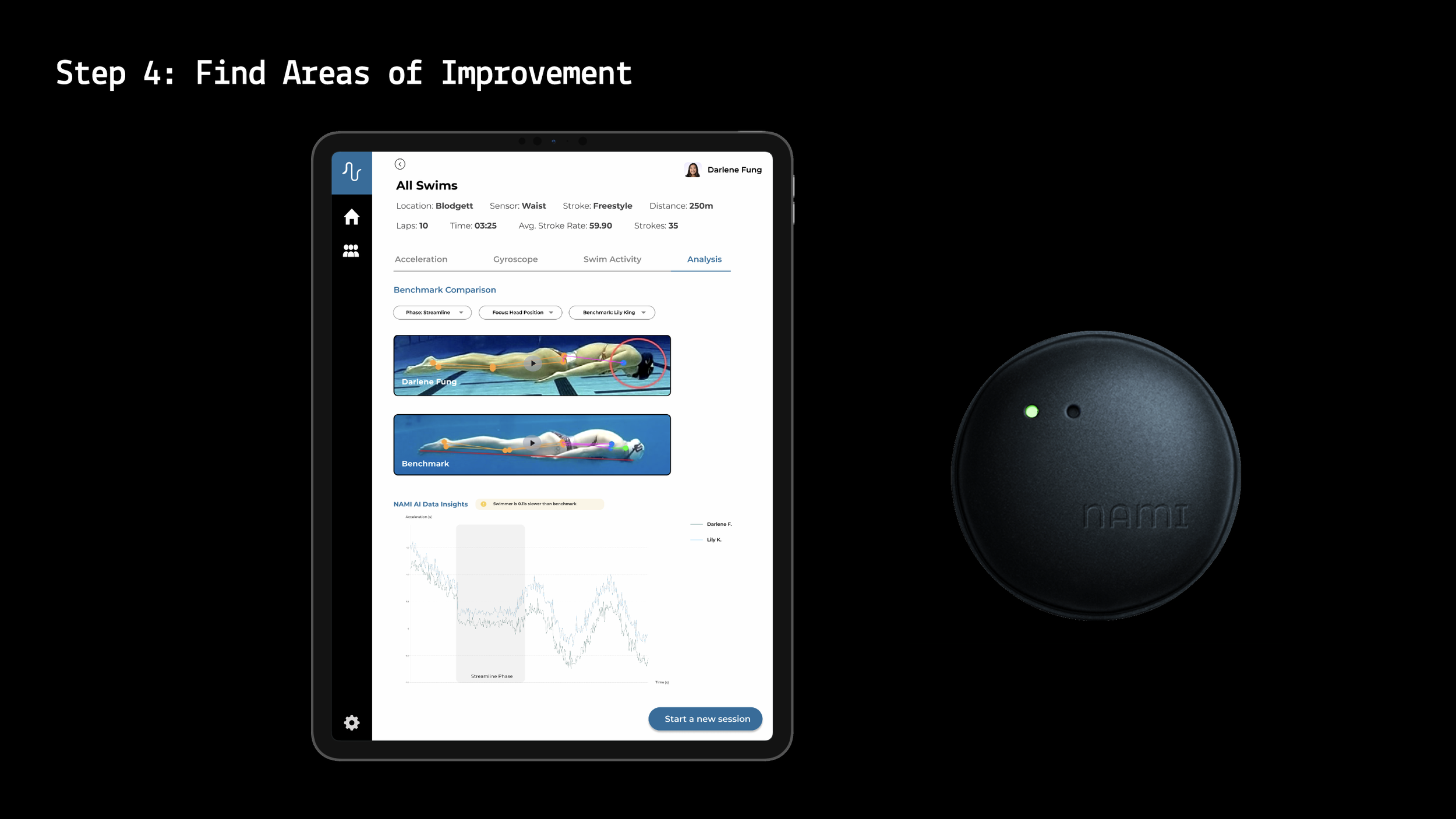
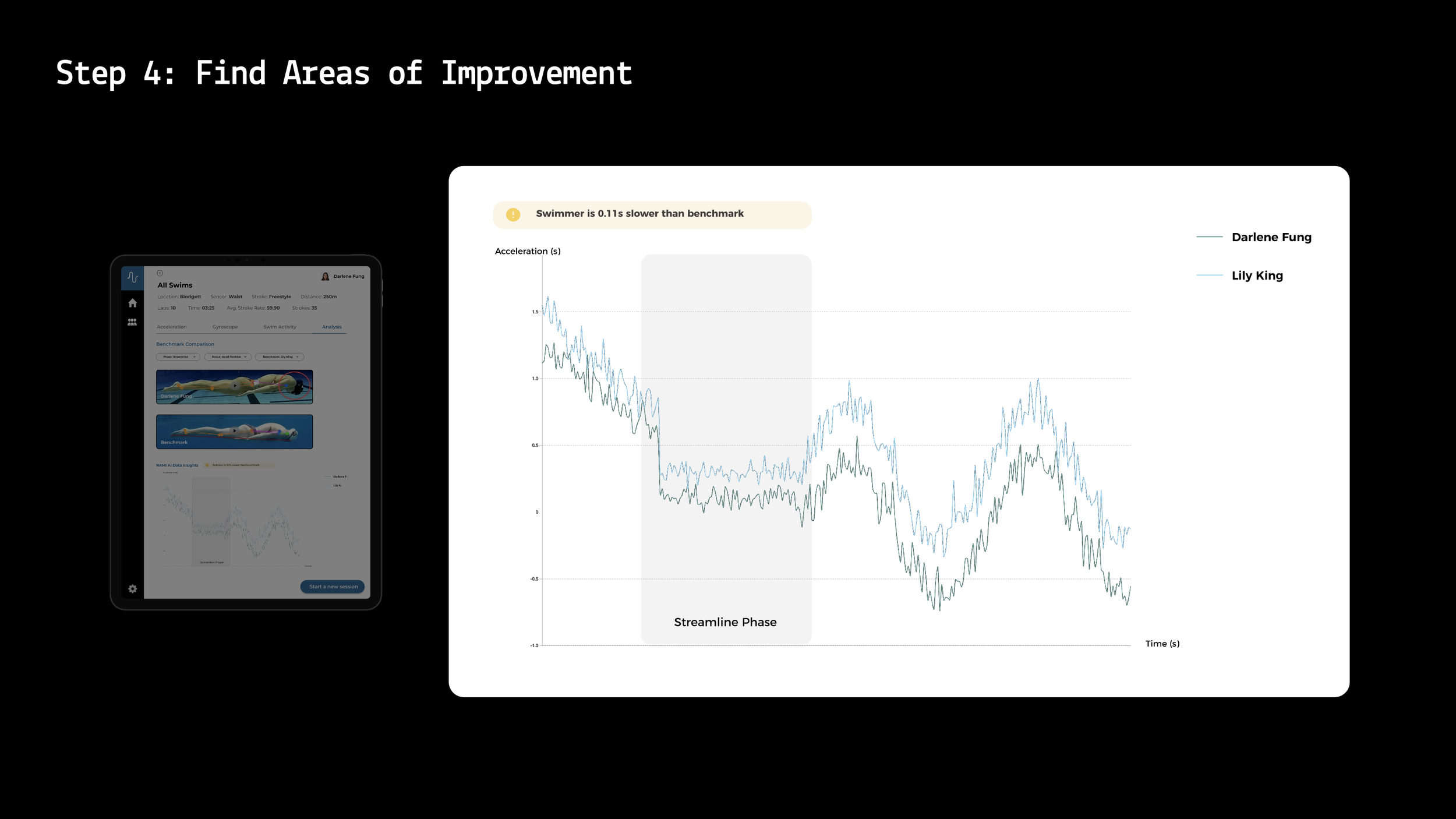
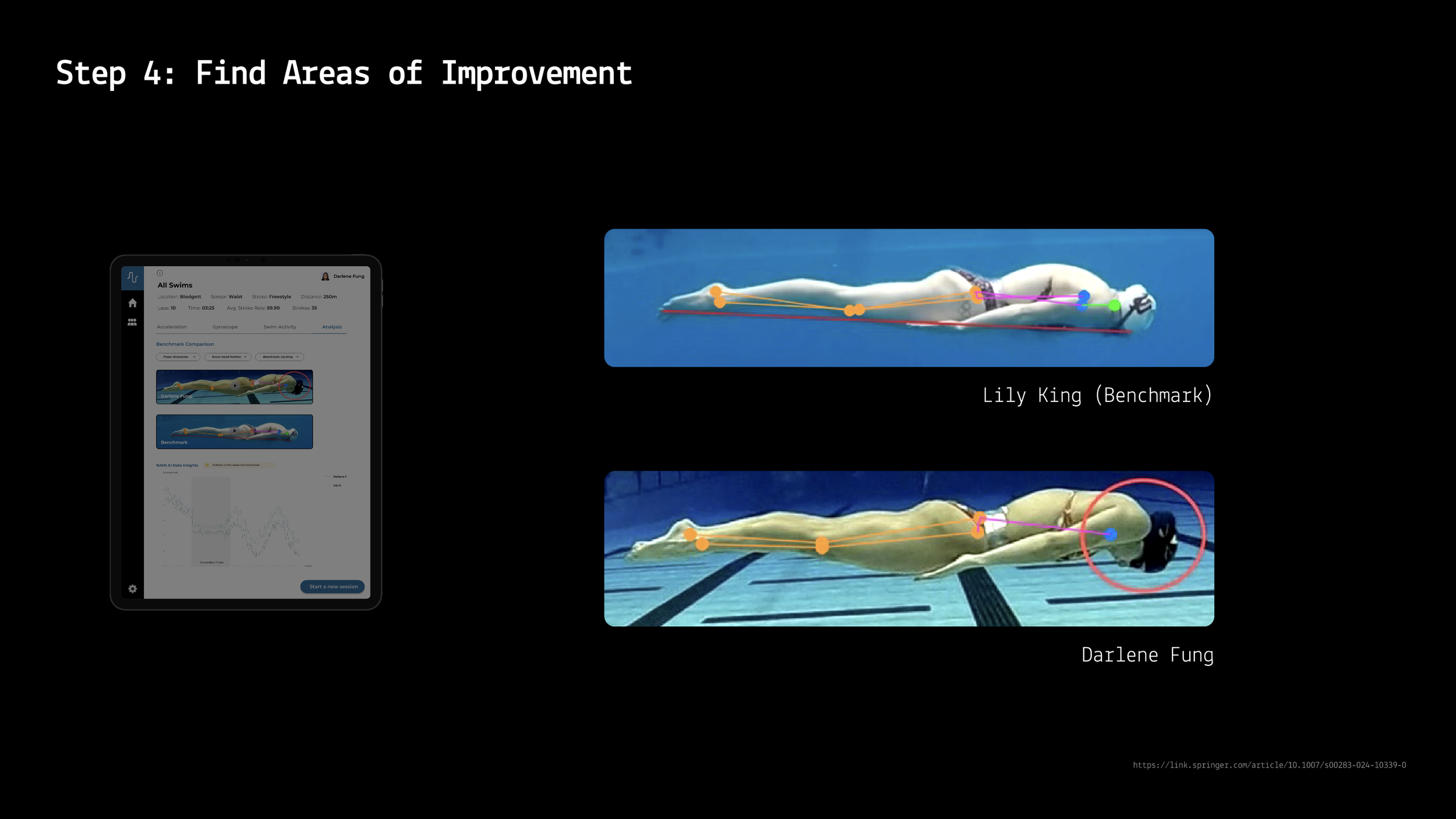
Process
Collaboration with swimmers and their coaches was integral to the development of Nami. Through interviews and collaborative prototyping, their feedback shaped the system's data visualization features and ensured it addressed real-world challenges.


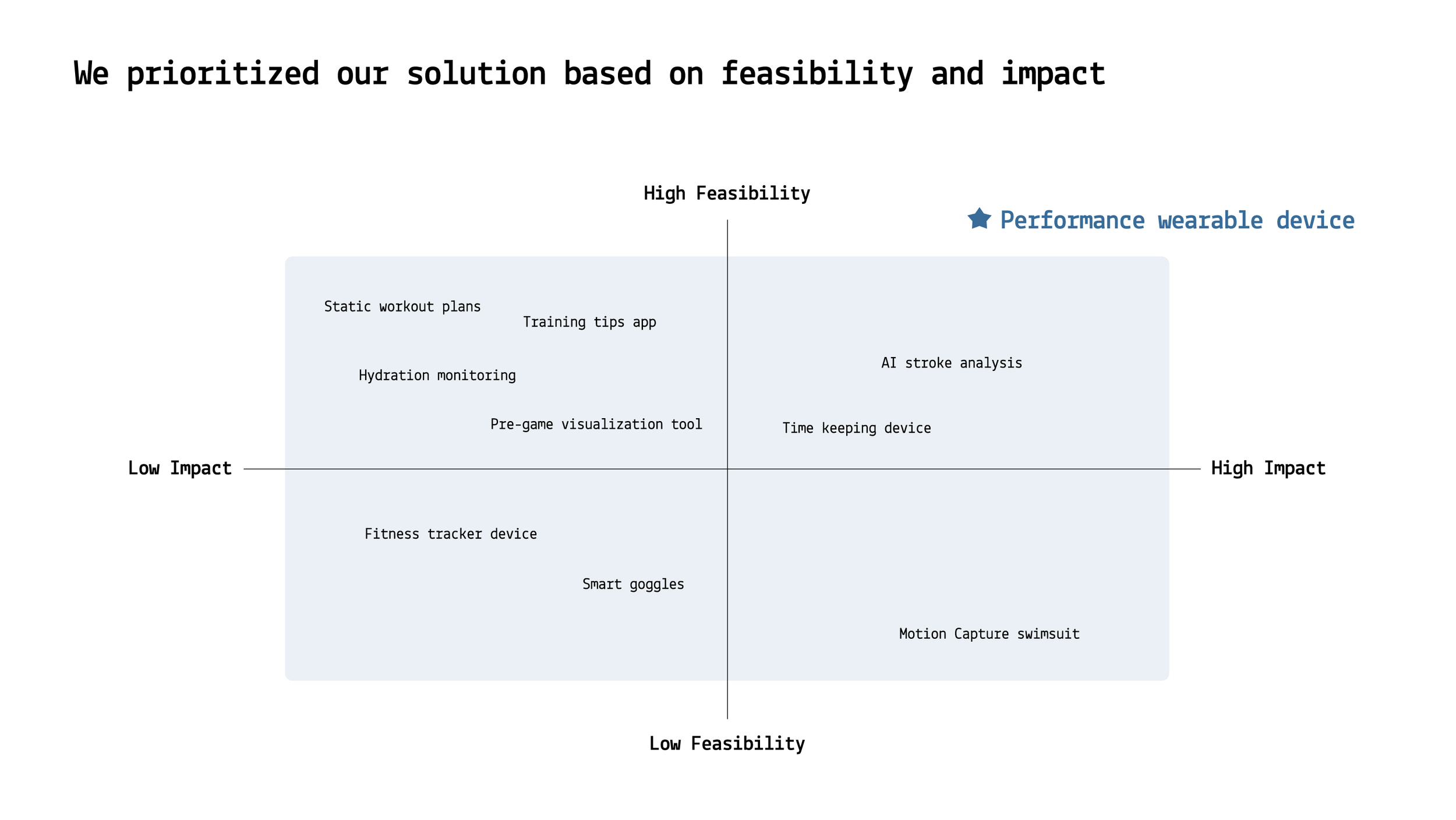
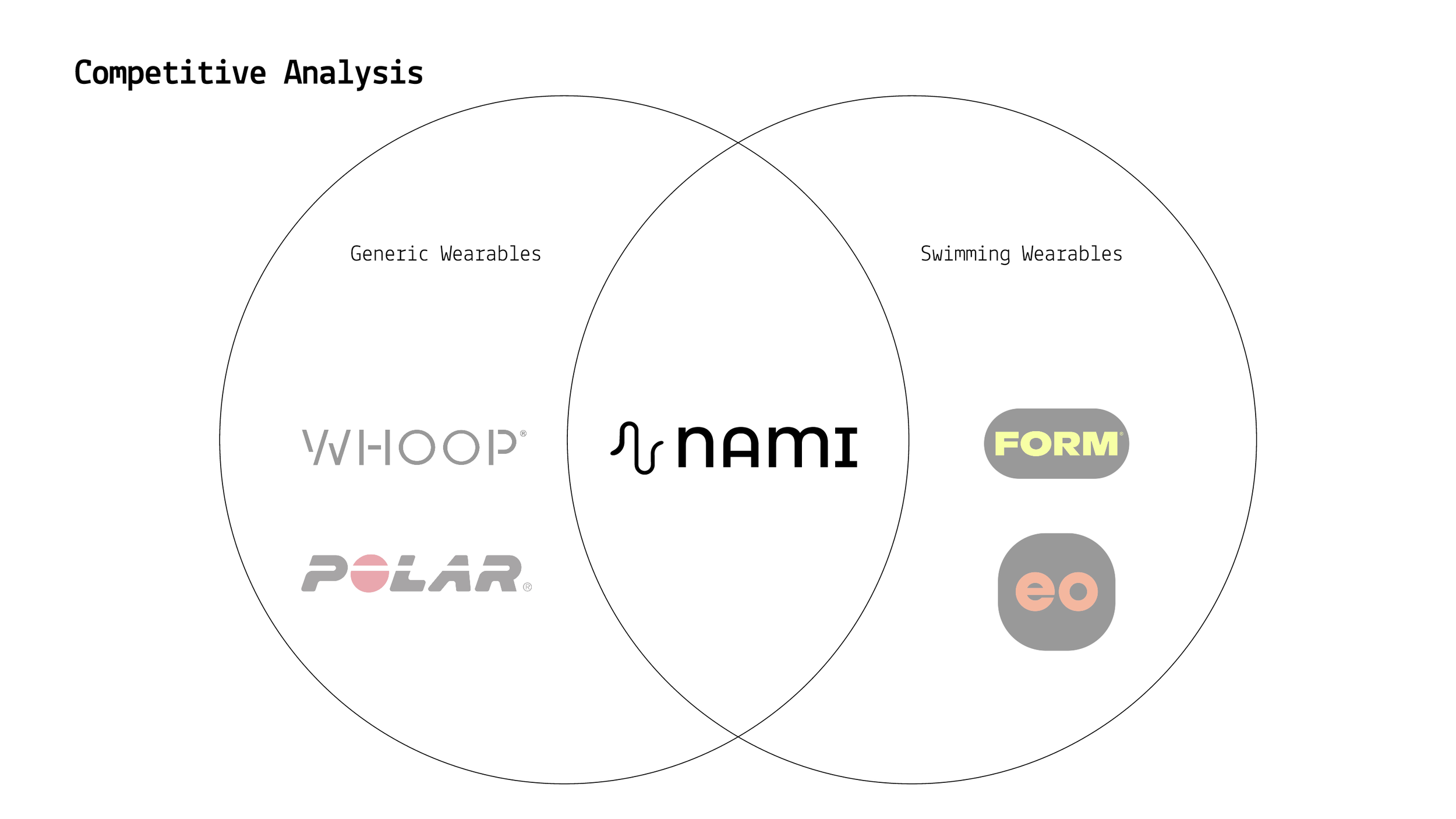
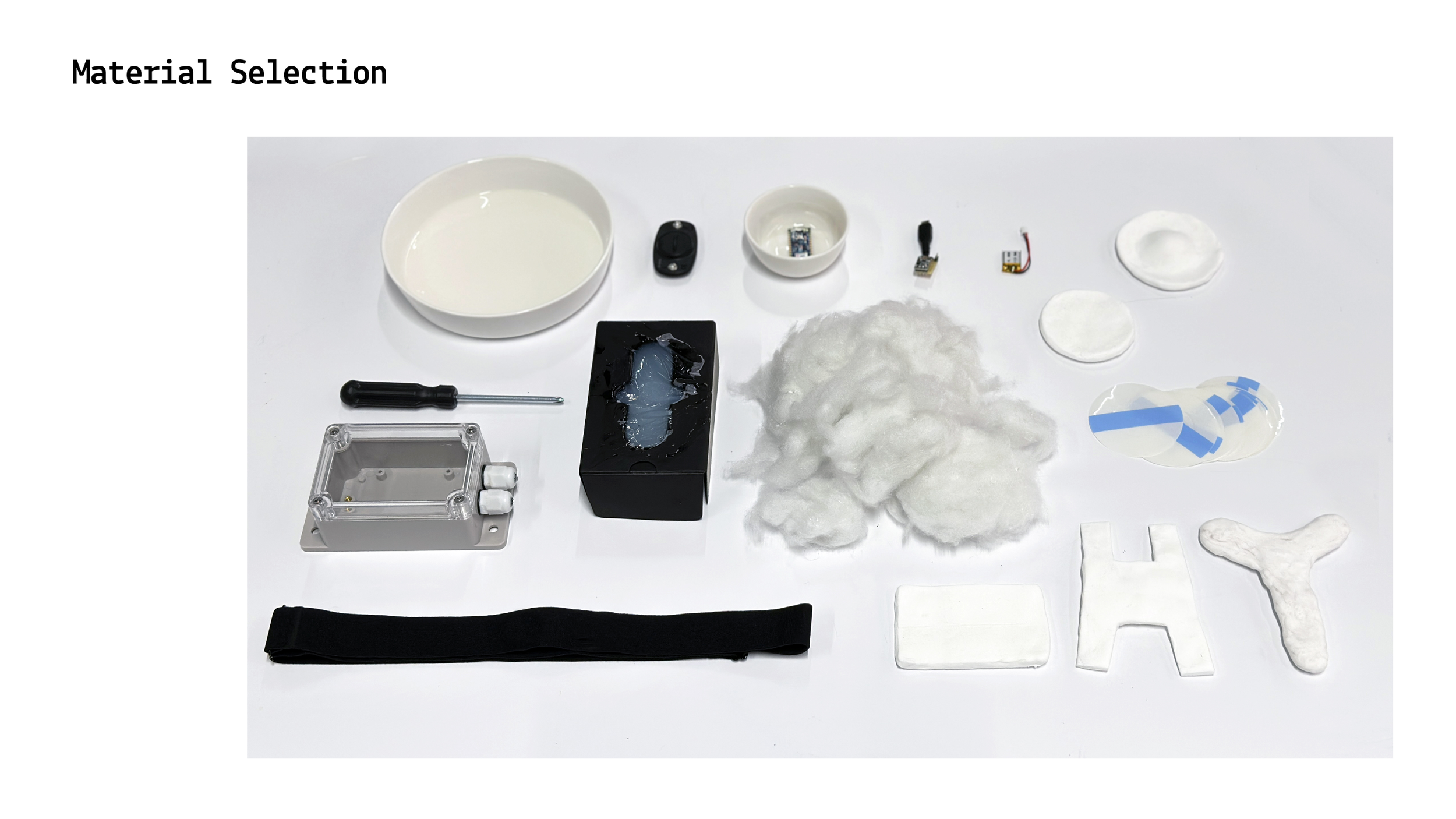
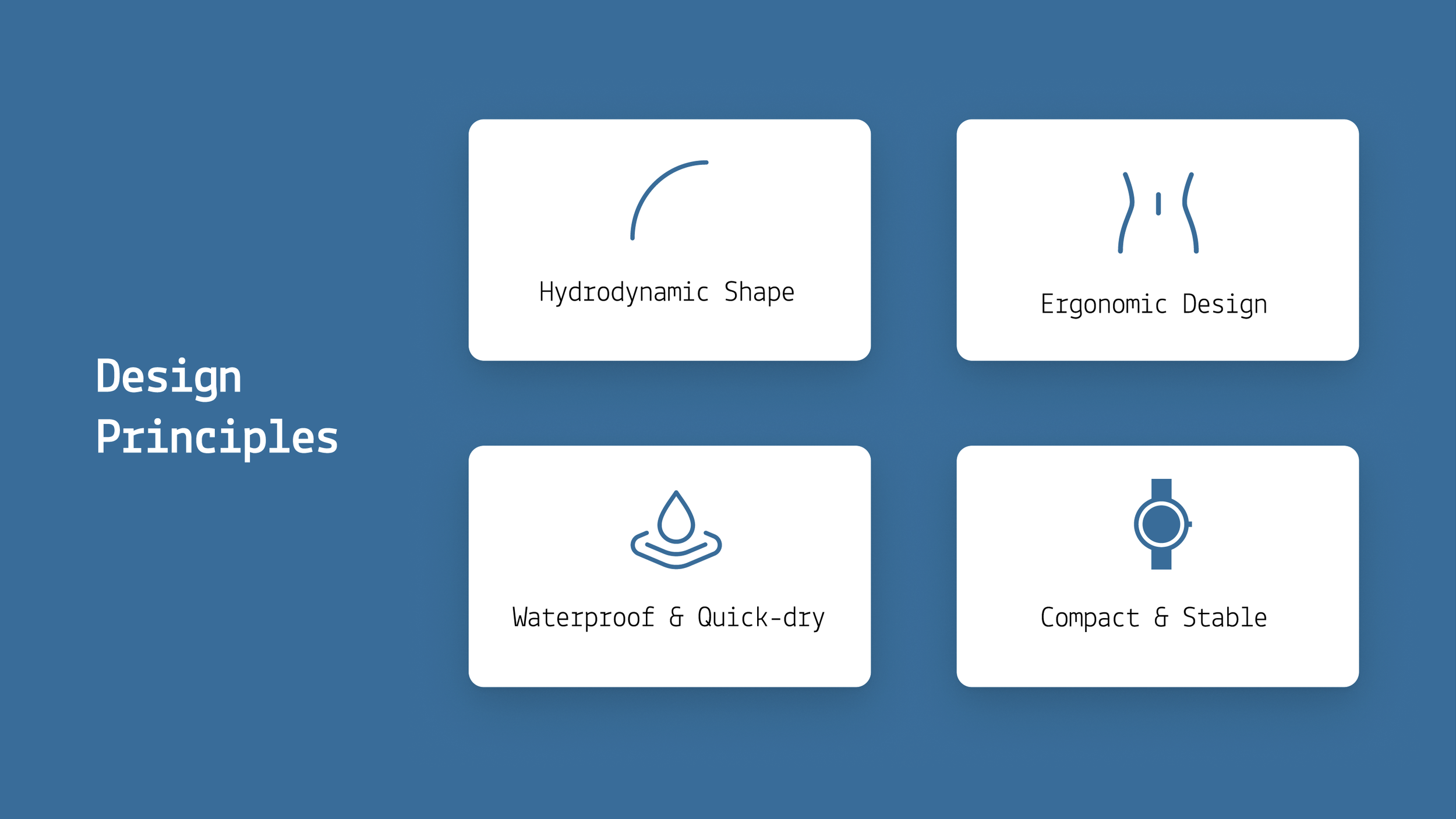
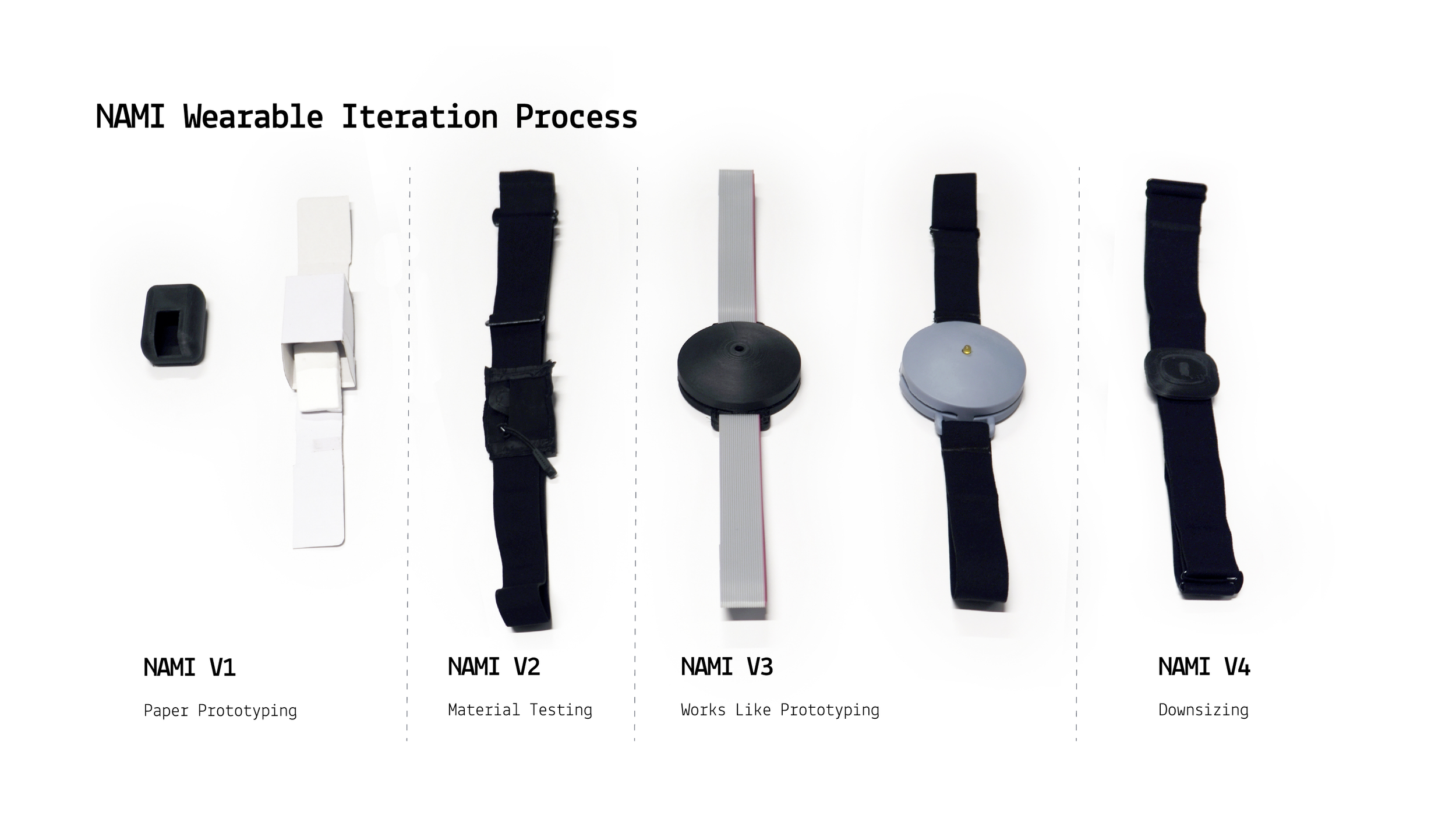
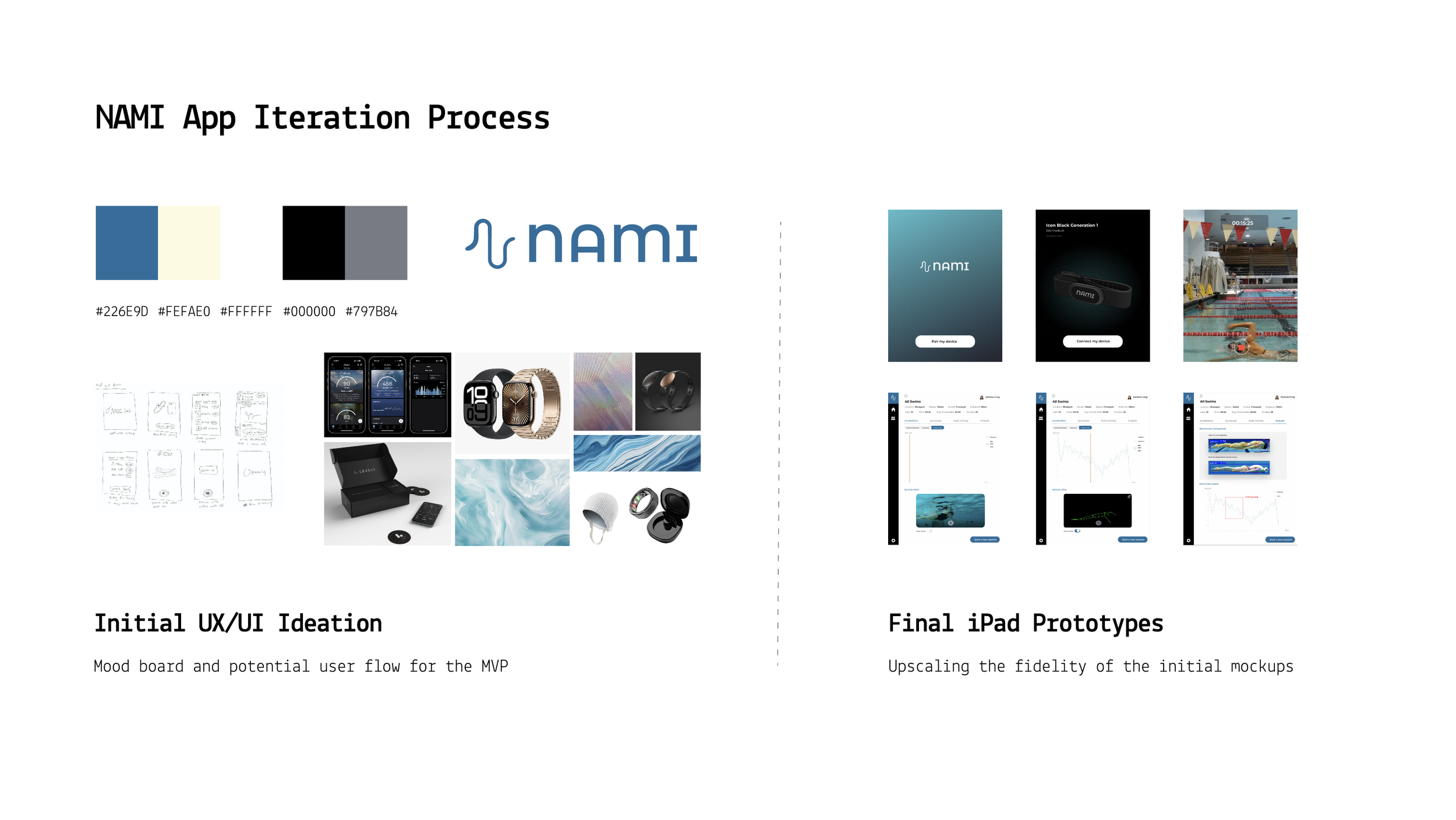
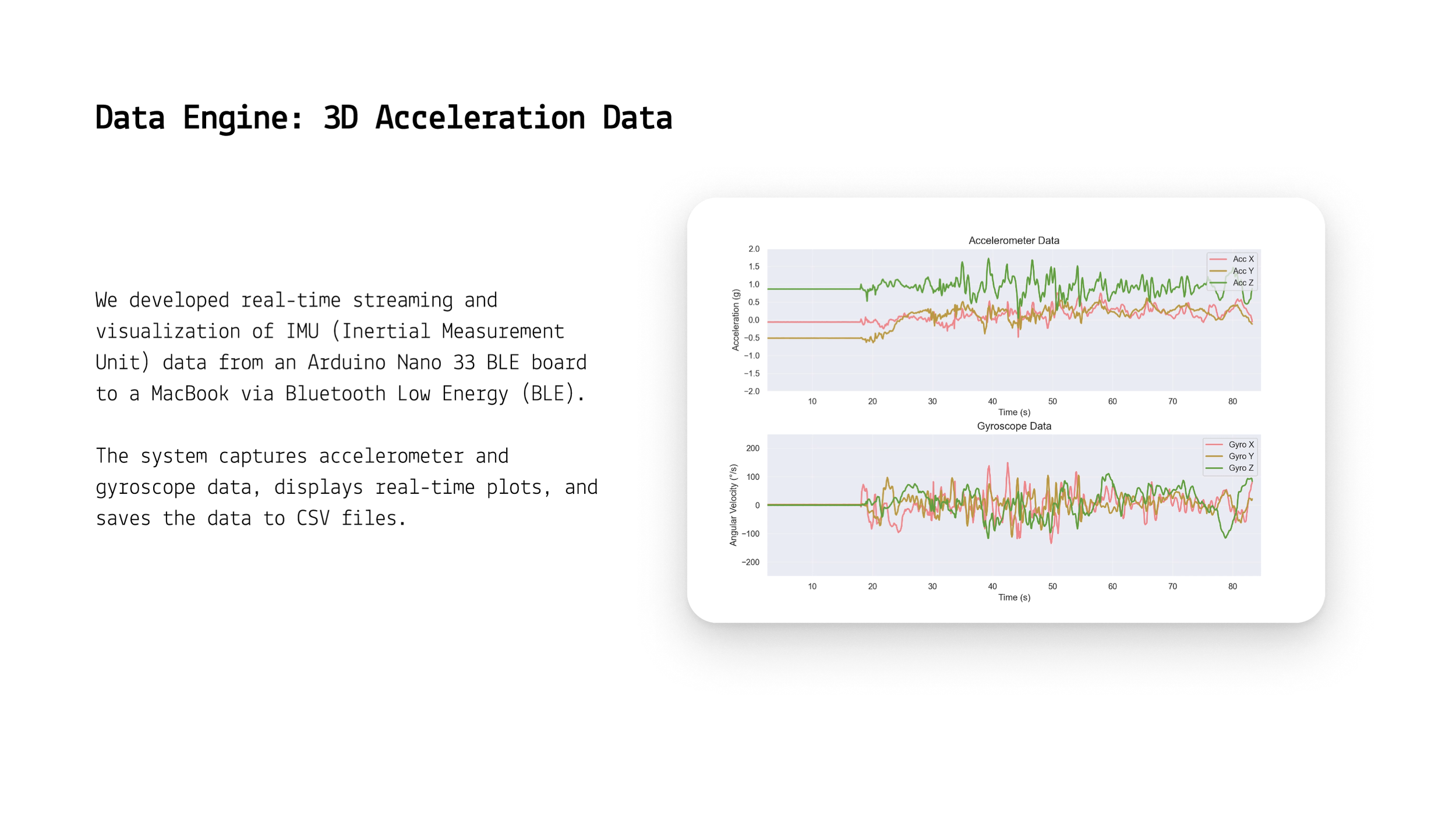
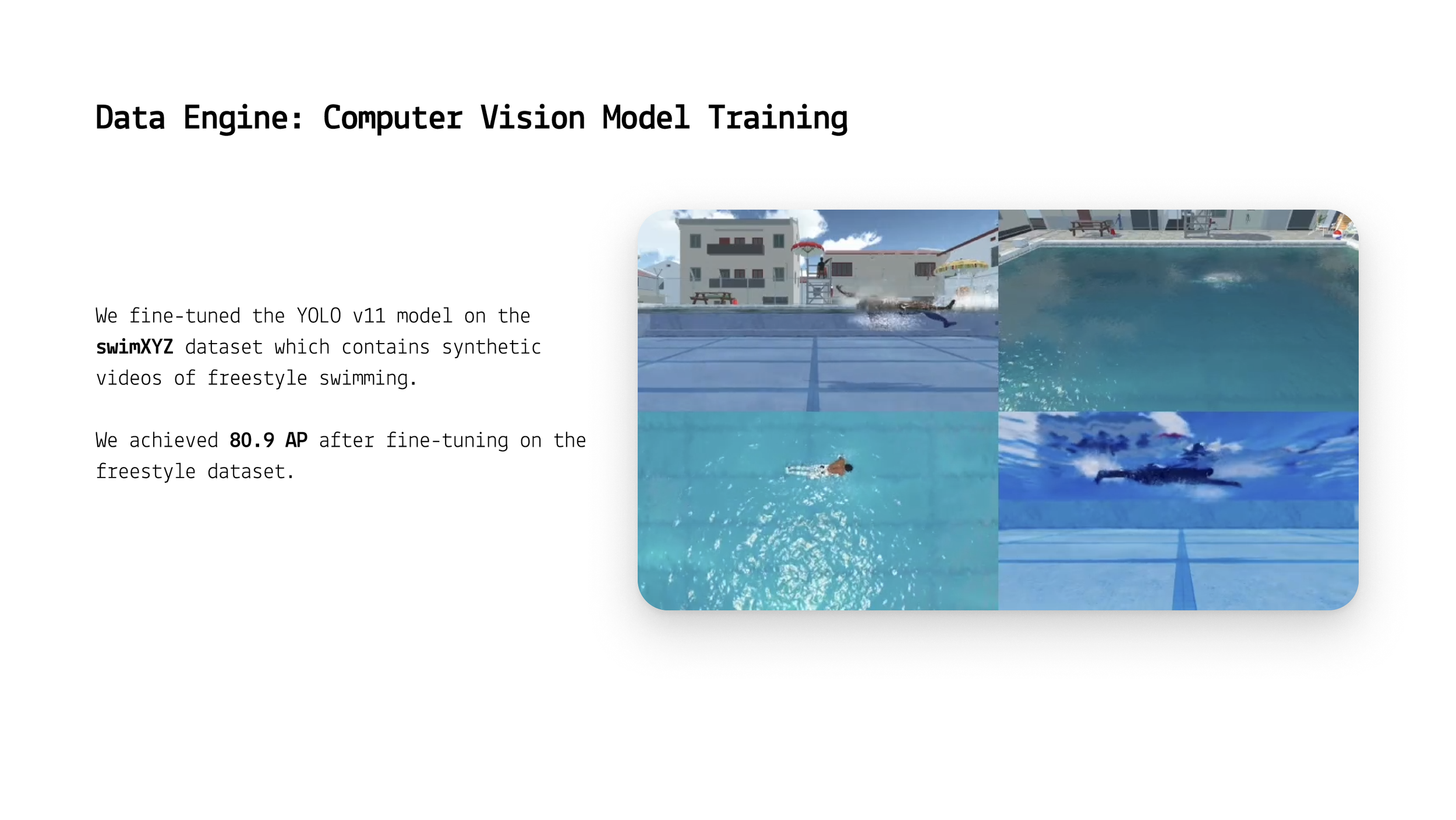
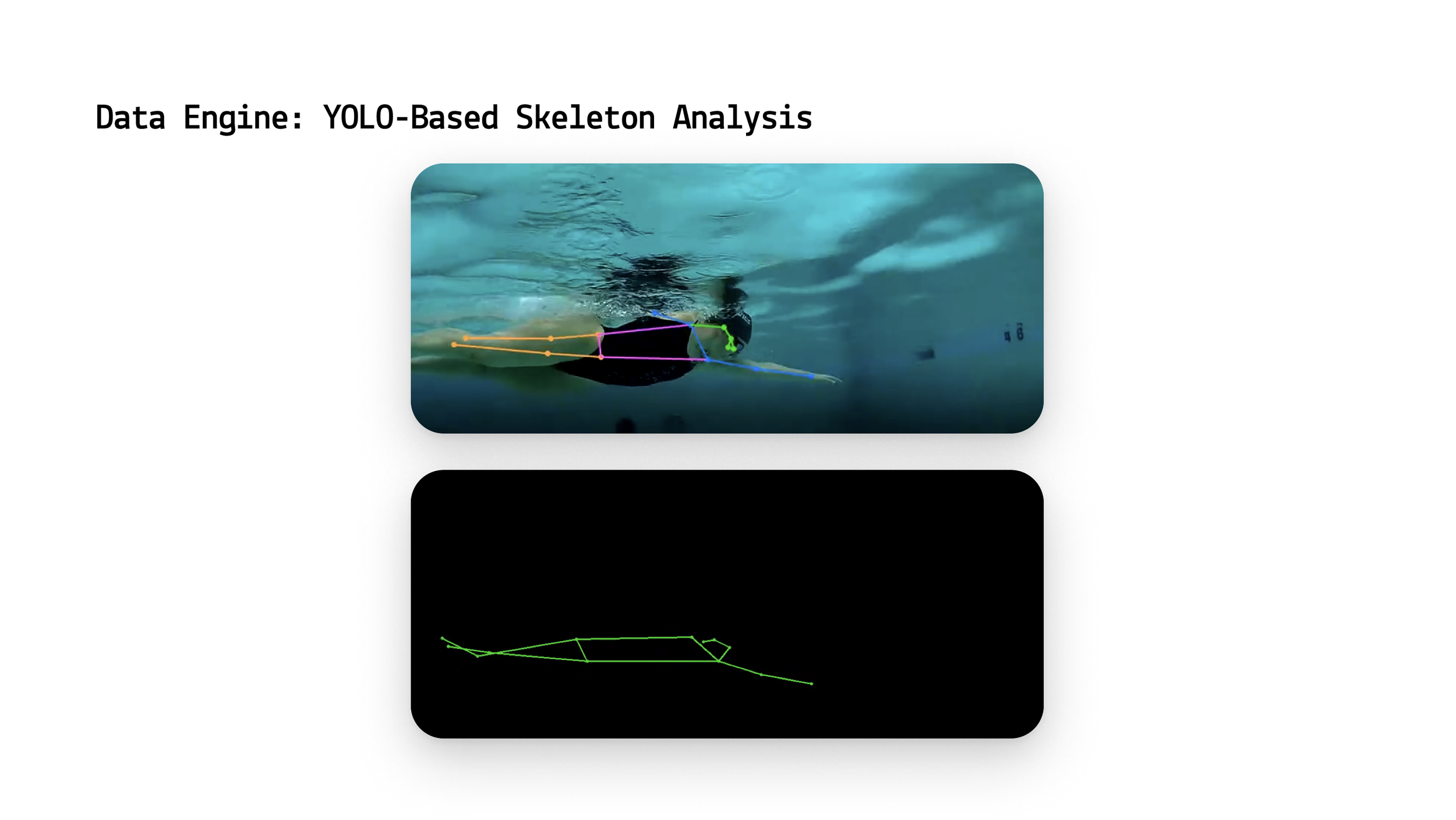
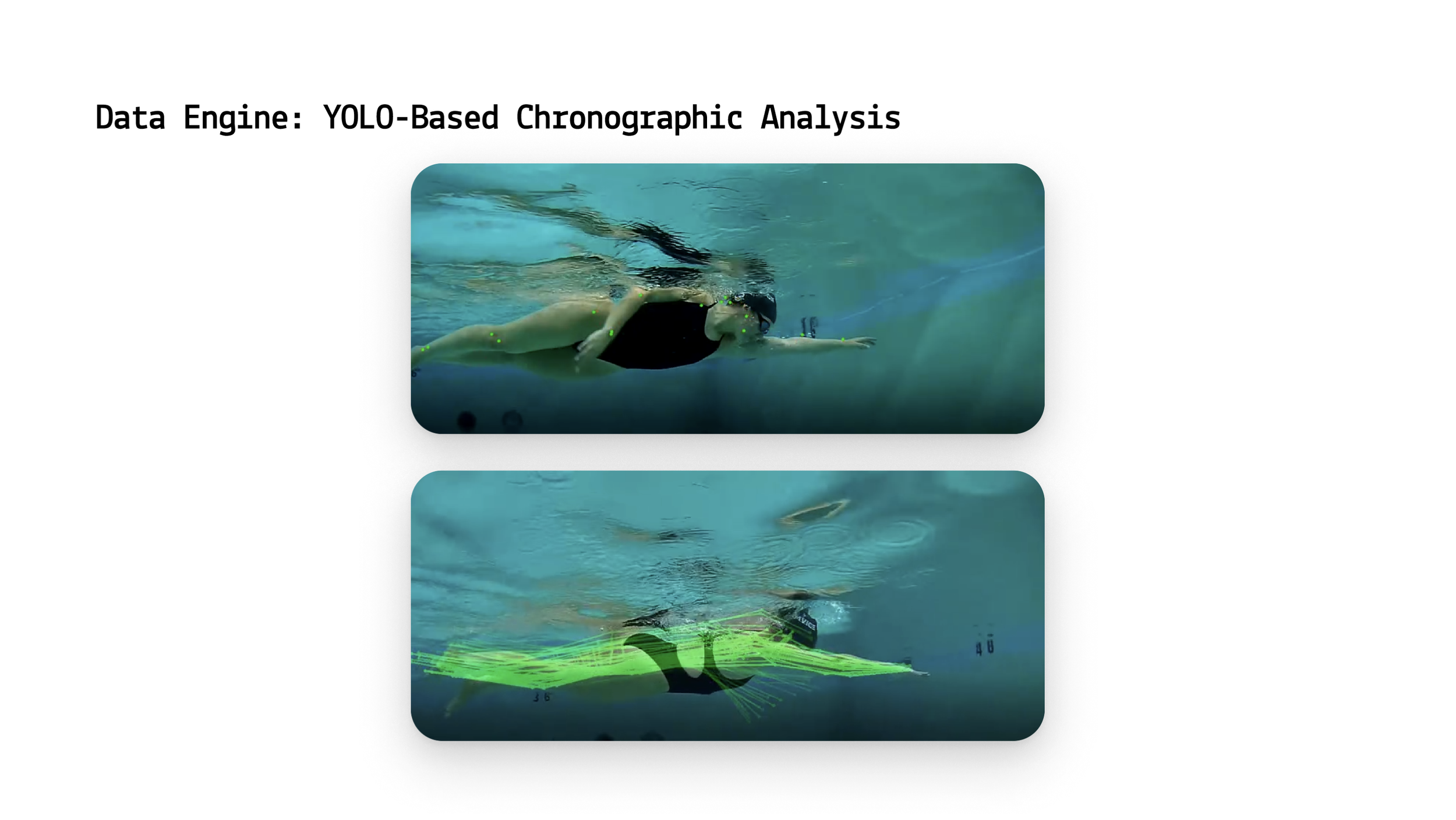
Impact and Next Steps
Initial results underscore Nami's potential
95% efficiency optimization - Athletes corrected inefficient strokes within three training sessions.
40% reduction in coaching analysis time - Streamlined processes allowed coaches to support more athletes effectively.
5% performance improvement - Small but significant gains translated into competitive advantages, turning millisecond reduction into potential medals.
Currently in Alpha testing with the Harvard swimming team, Nami aims to expand to five Division I college teams by its Beta launch. By 2030, Nami envisions becoming the global swimming wearable platform, leading data-driven innovation to help athletes achieve their dreams.

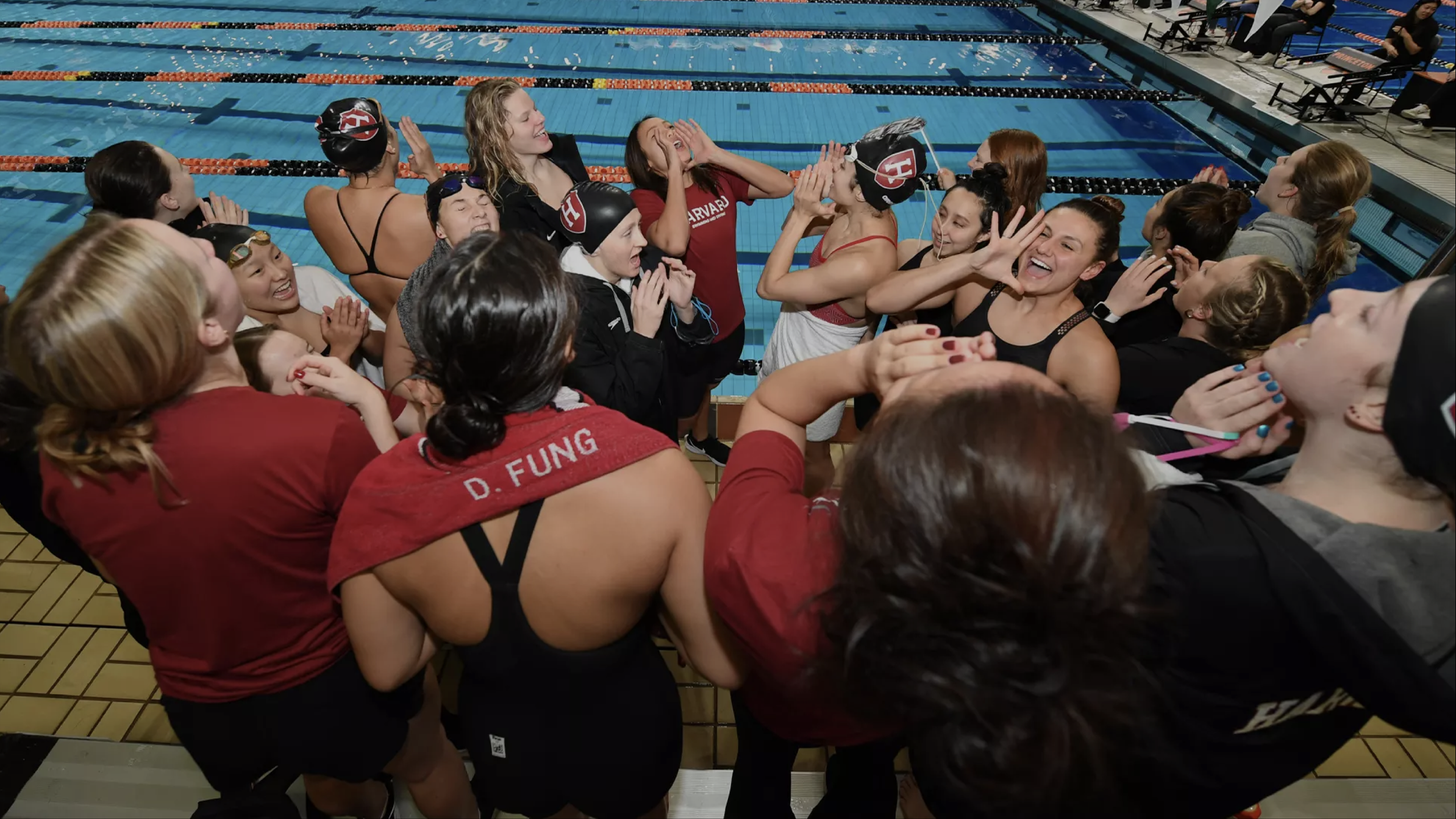
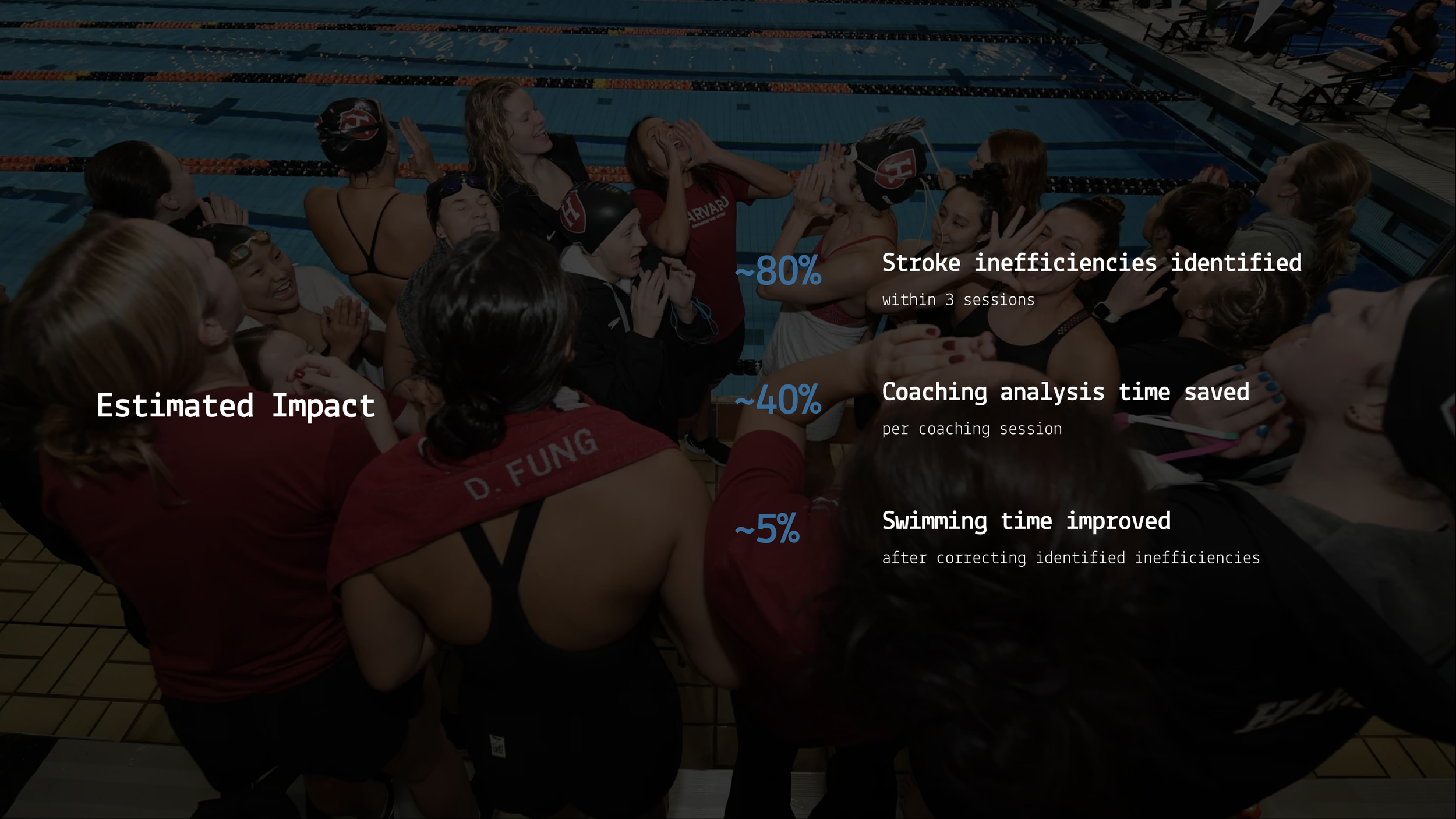
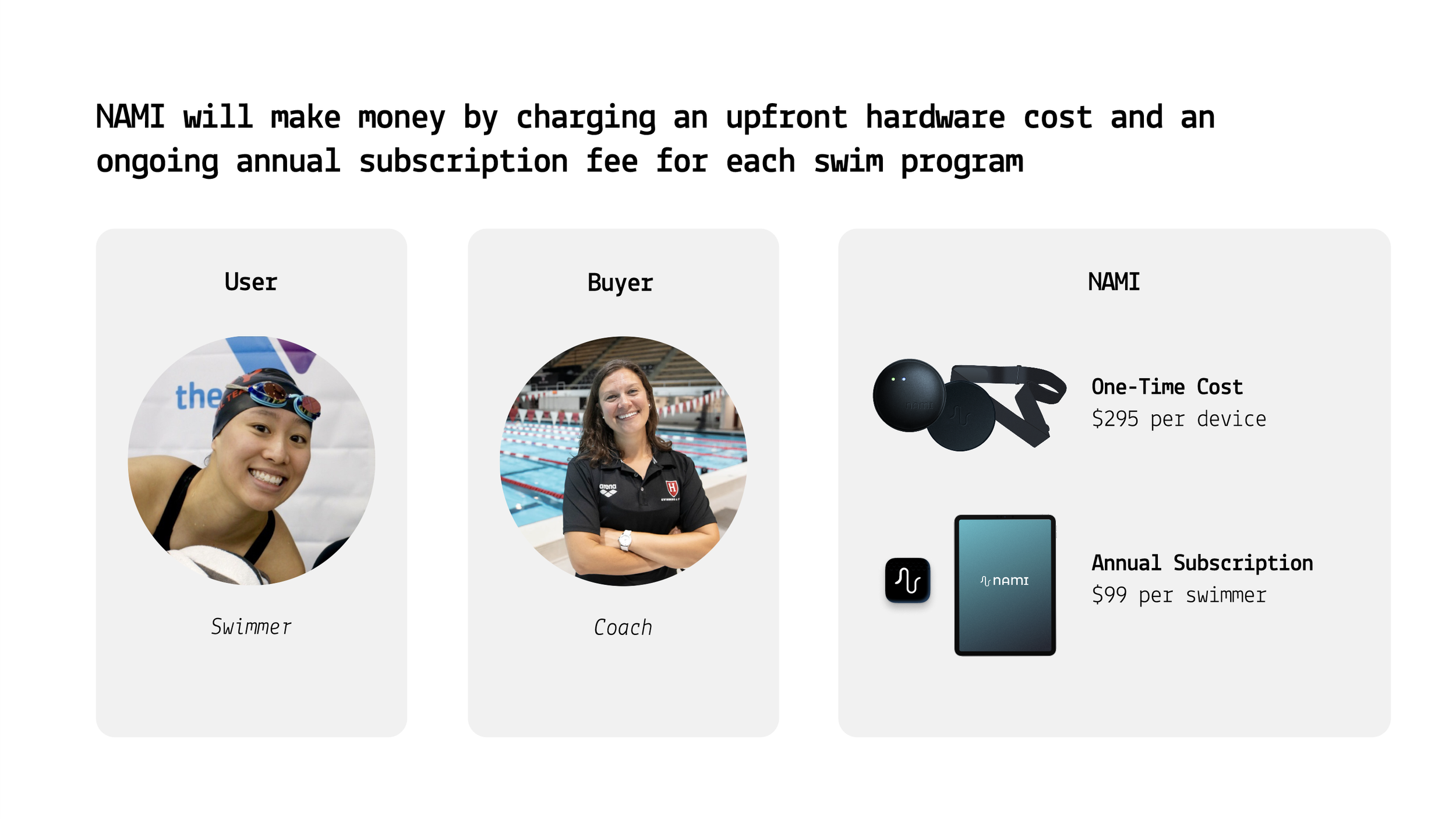
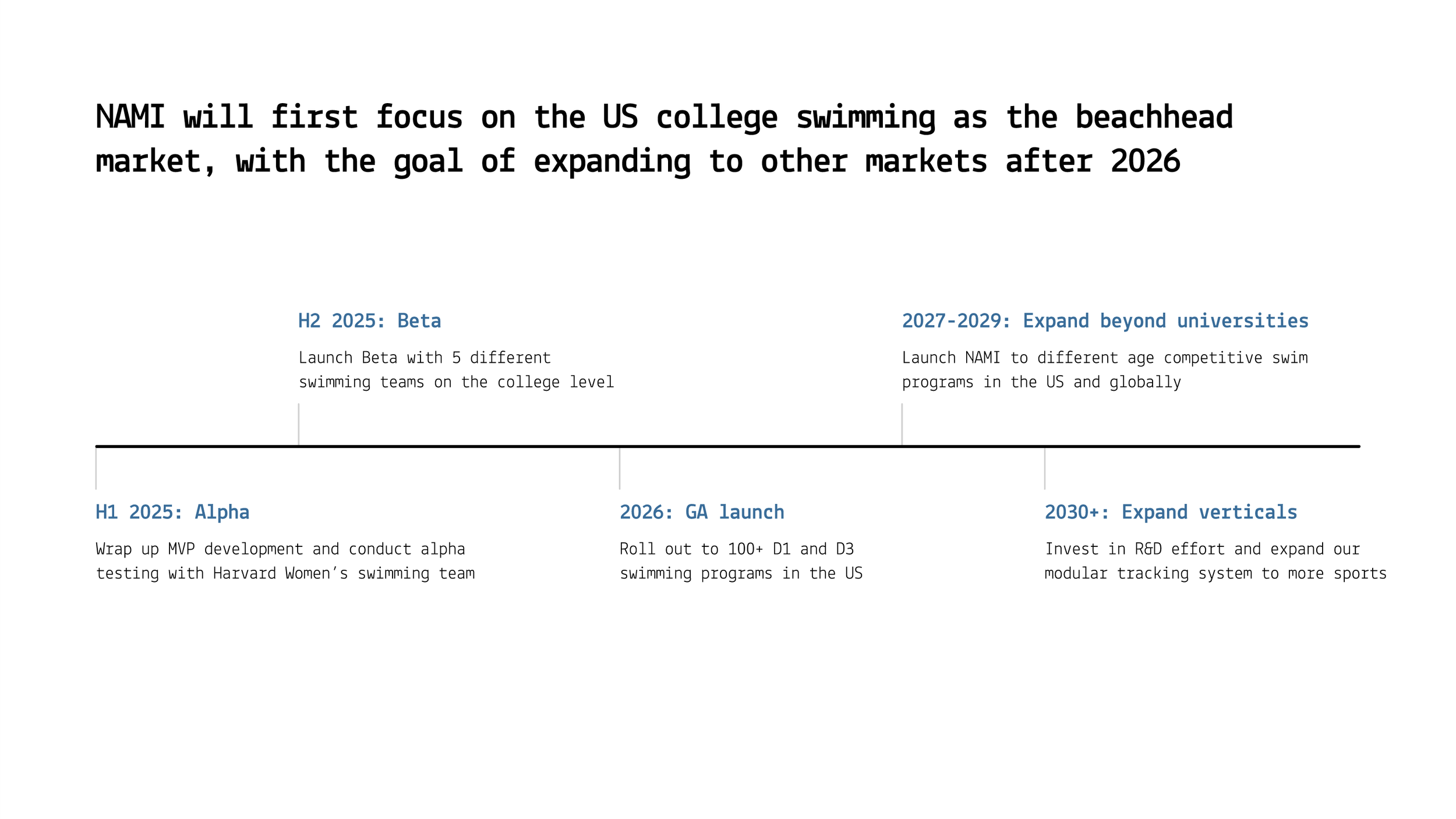
Discussion
Addressing Gender Gaps in Design
Designing for competitive swimming reveals a persistent issue: the neglect of the unique needs of female athletes. Traditional sports equipment often employs a "shrink it and pink it" approach, producing resized and recolored versions of men's gear. This outdated mindset fails to support the complex needs of female athletes, limiting their potential for excellence.
By involving female athletes like Darlene Fung as lead users, Nami ensured its design accounted for diverse body types and training styles. This inclusion signals a broader need for female representation in sports technology design, where their perspectives can drive innovation and equity.
References
This project was funded and developed within the Design Engineering program at Harvard, in collaboration with Leo Luo and Sylvester Cardorelle.
